Continuing our tours in the area around Kerman, the day after exploring the Lut Desert, our driver took us to three interesting historical sites; The ancient citadel of Bam, the ancient castle of Rayen and the 18th century Persian Garden of Shazdeh in Mahan.
Arg-e Bam, the ancient citadel of Bam
Arg-e Bam dates back to the Achaemenid Empire (6th-4th centuries BC), although most of the buildings connected to the citadel were built during the Safavid dynasty, which ruled from 1501 to 1722. The prime time for the citadel was from the 7th to the 11th centuries, where it was located at the crossroads of the important Silk Road trade route.
The city surrounding the citadel has a tragic story. It was first abandoned in 1722 due to an Afghan invasian, and shortly after the city had been re-settled, it was abandoned once again due to an invasion from the city of Shiraz. But the most tragic event of all was the 2003 earthquake, which had a magnitude of 6.6. The earthquake destroyed large parts of the city, including the entire citadel, and killed over 26,000 people. The city, as well as the citadel, consisted mostly of unstable mudbrick buildings, and since the earthquake happened at night, when most of Bam’s citizens were asleep in their homes, there wasn’t much they could do.
Before the earthquake, Arg-e Bam was the largest adobe building in the world. Shortly after the quake, the city of Bam was listed as a World Heritage Site by UNESCO and the reconstruction of the citadel began. Today, 14 years after the destruction of the city and the citadel, a lot of it has been built up again, although much of the connecting mudbrick buildings to the citadel are still in ruins.
Despite this tragic story, and the fact that the citadel can no longer be called authentic, we decided to visit Bam because of its historical importance. As an archaeology student, it would’ve felt weird for me to be so close to Bam and then not see it.
Walking around Bam wasn’t quite as interesting as the mudbrick village of Kharanaq, mostly because we weren’t able to explore wherever we wanted. Like most archaeological sites in western countries, the majority of Ancient Bam is made inaccessible for tourists, and there are just a few walkways through the ancient city and up to the citadel that you’re allowed to walk on. Despite this, I’m glad we visited Bam, but I’m even more glad that we’ve also visited some of the more accessible archaeological sites in Iran.
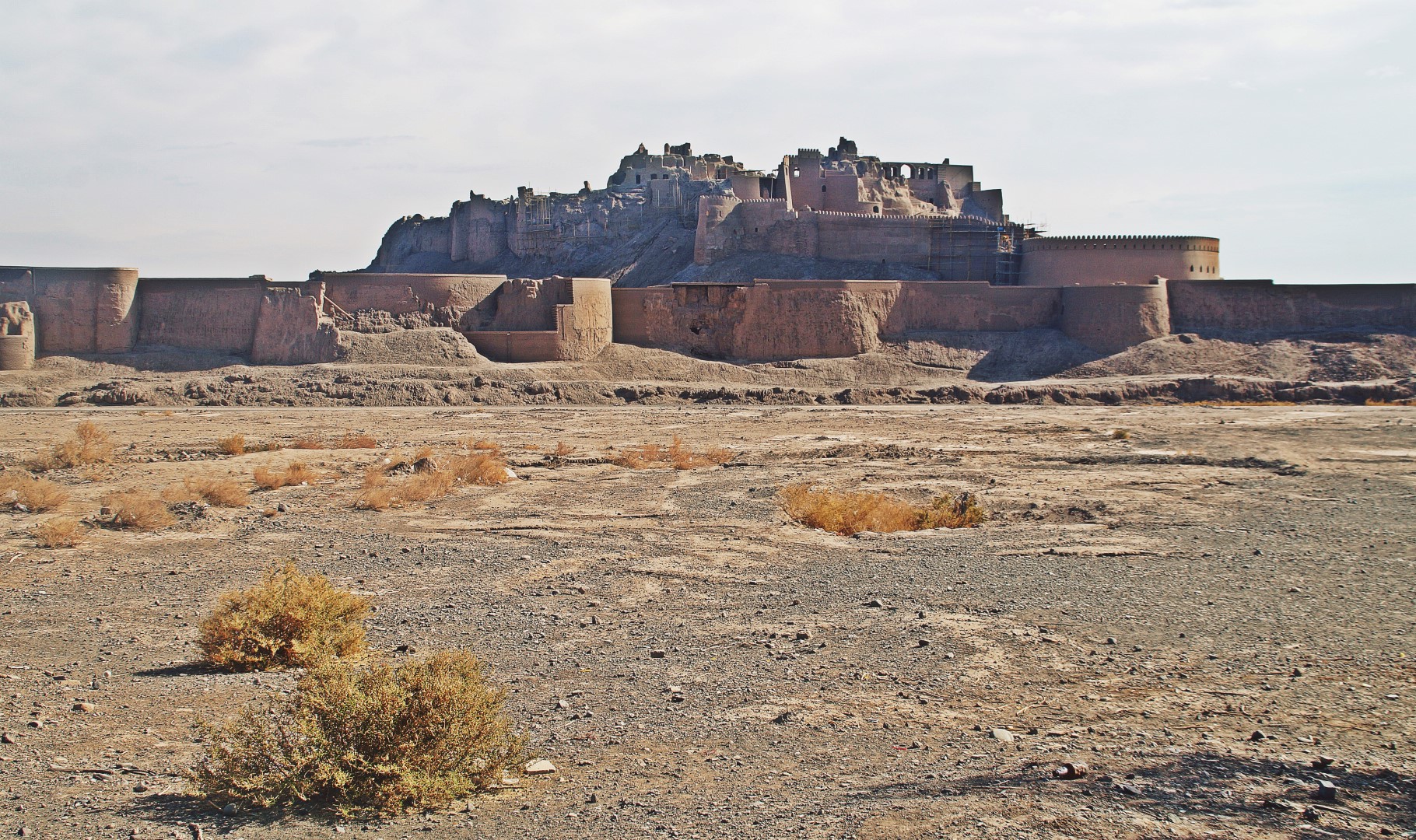
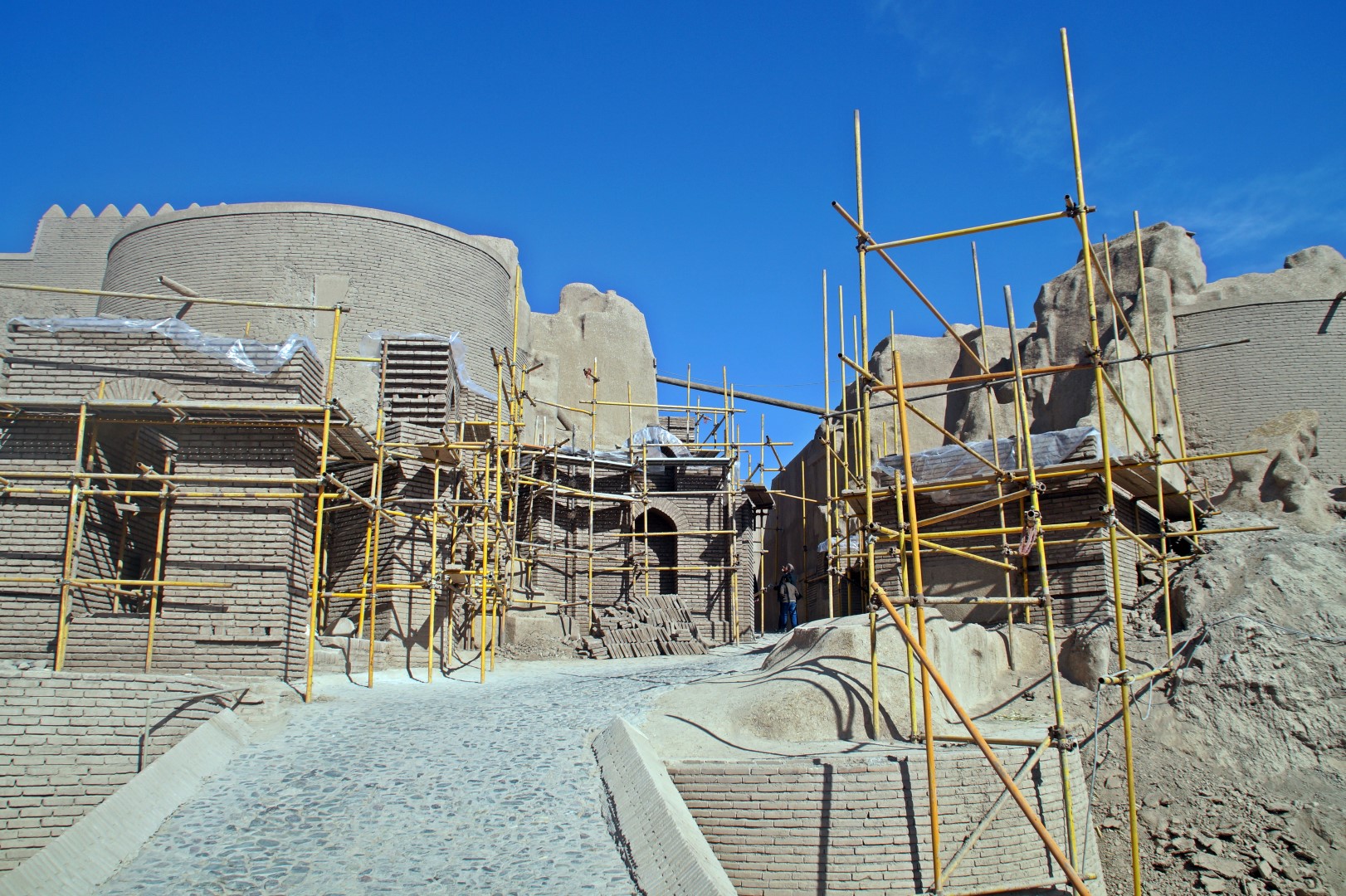
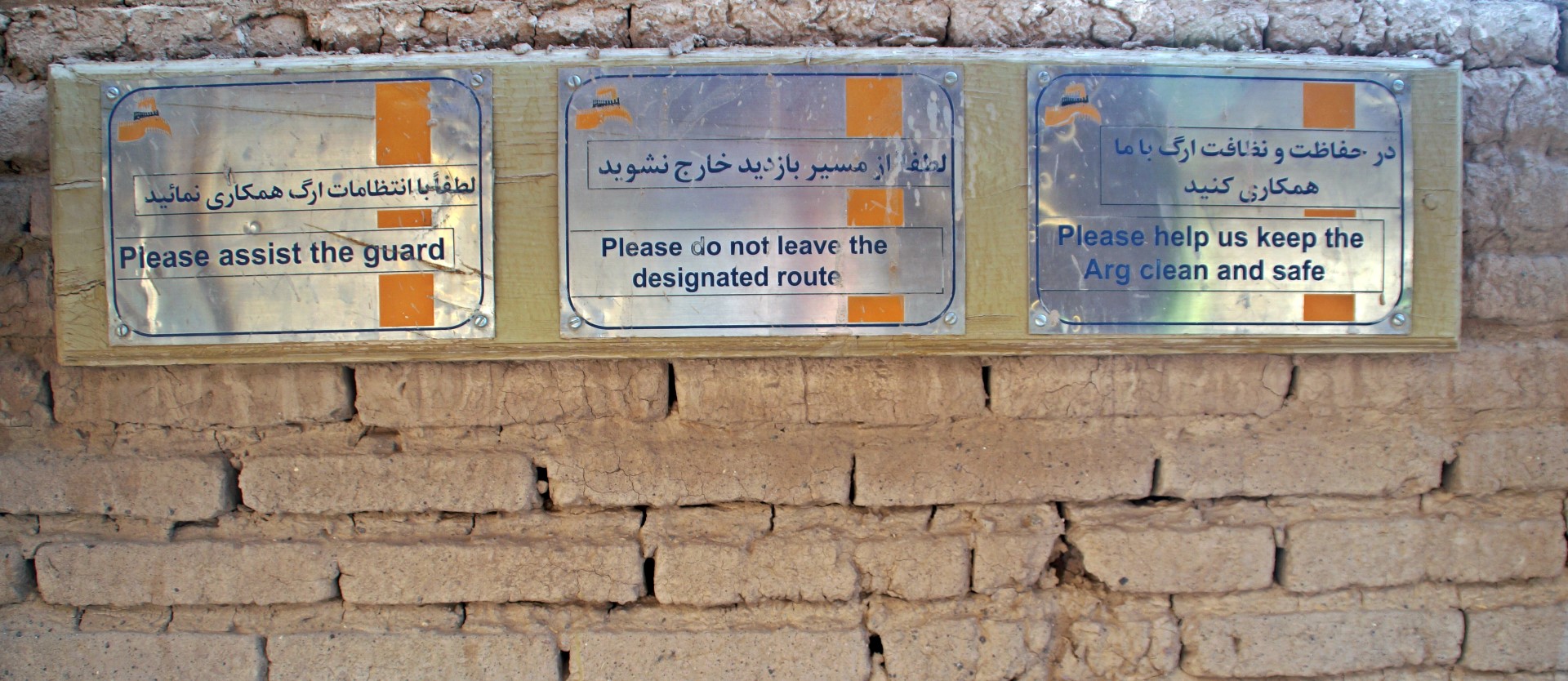
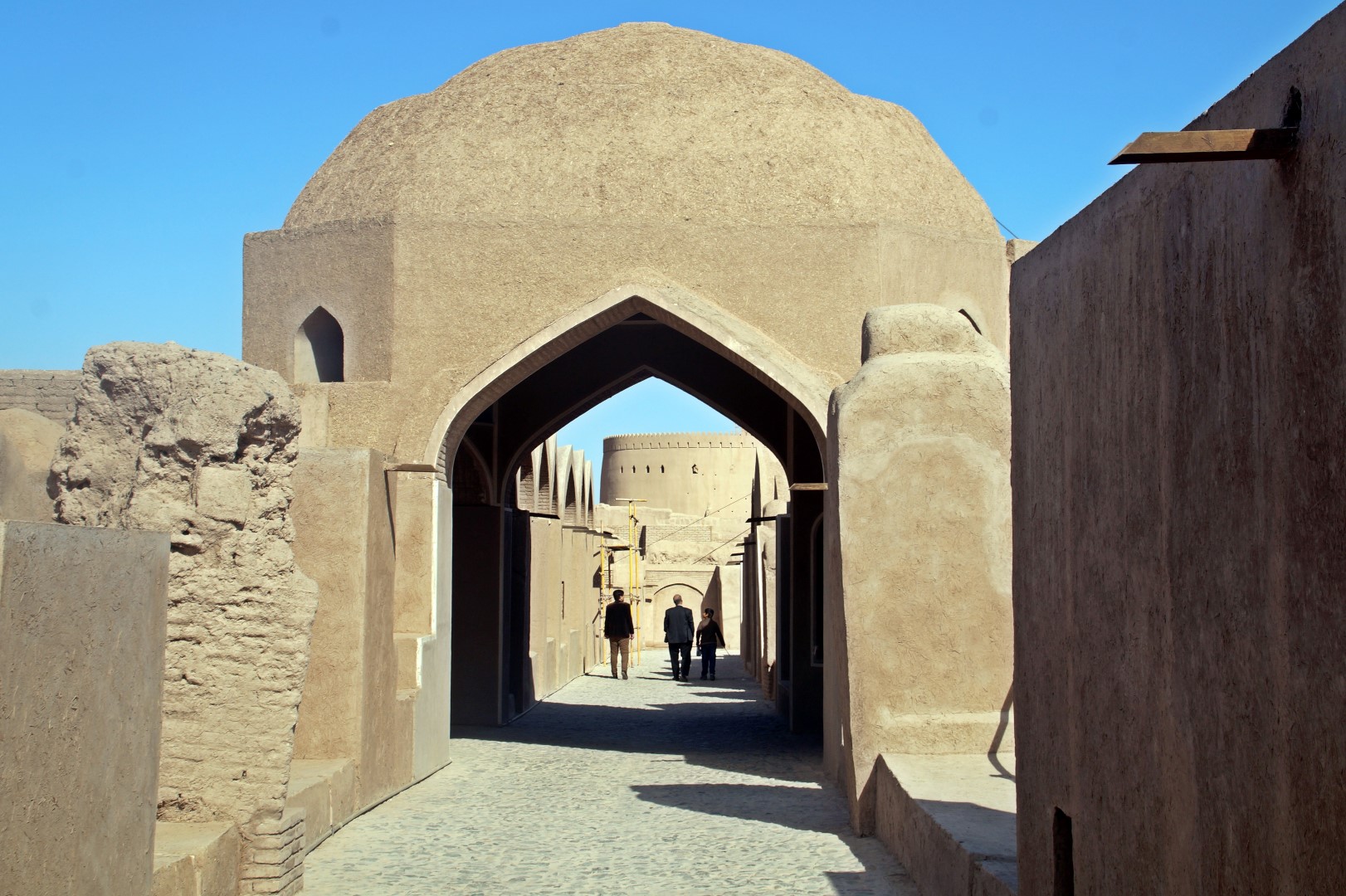
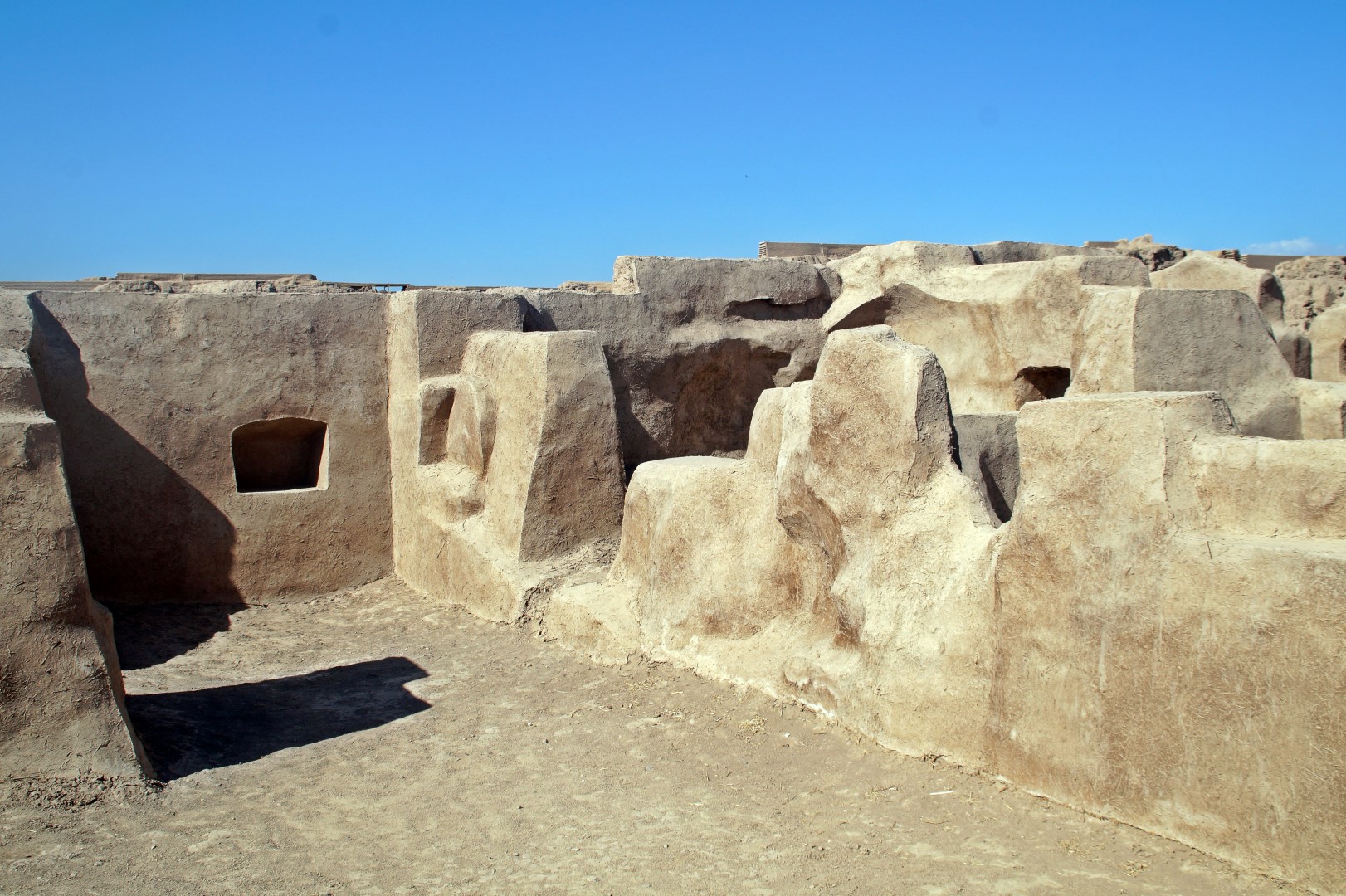

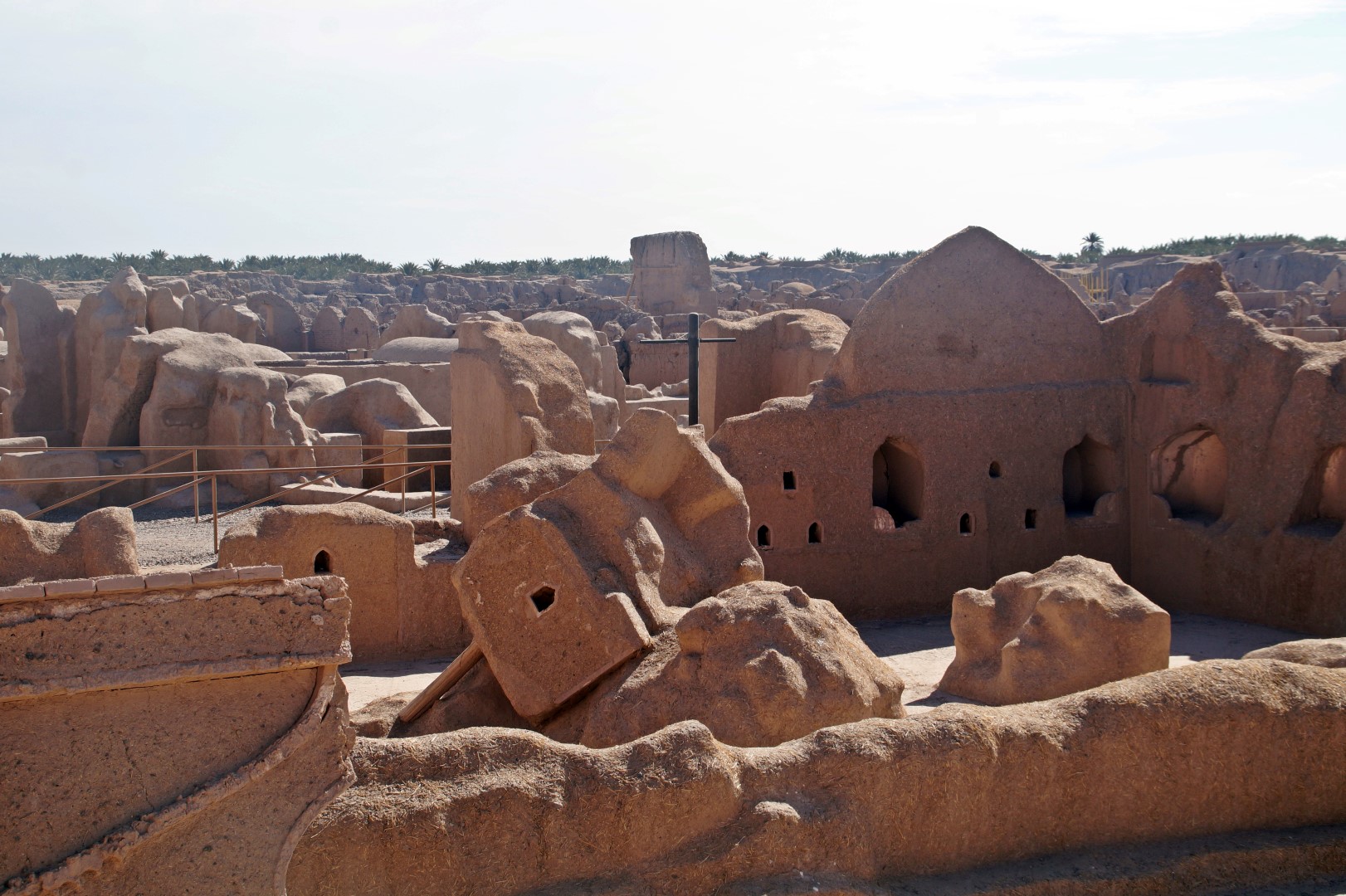
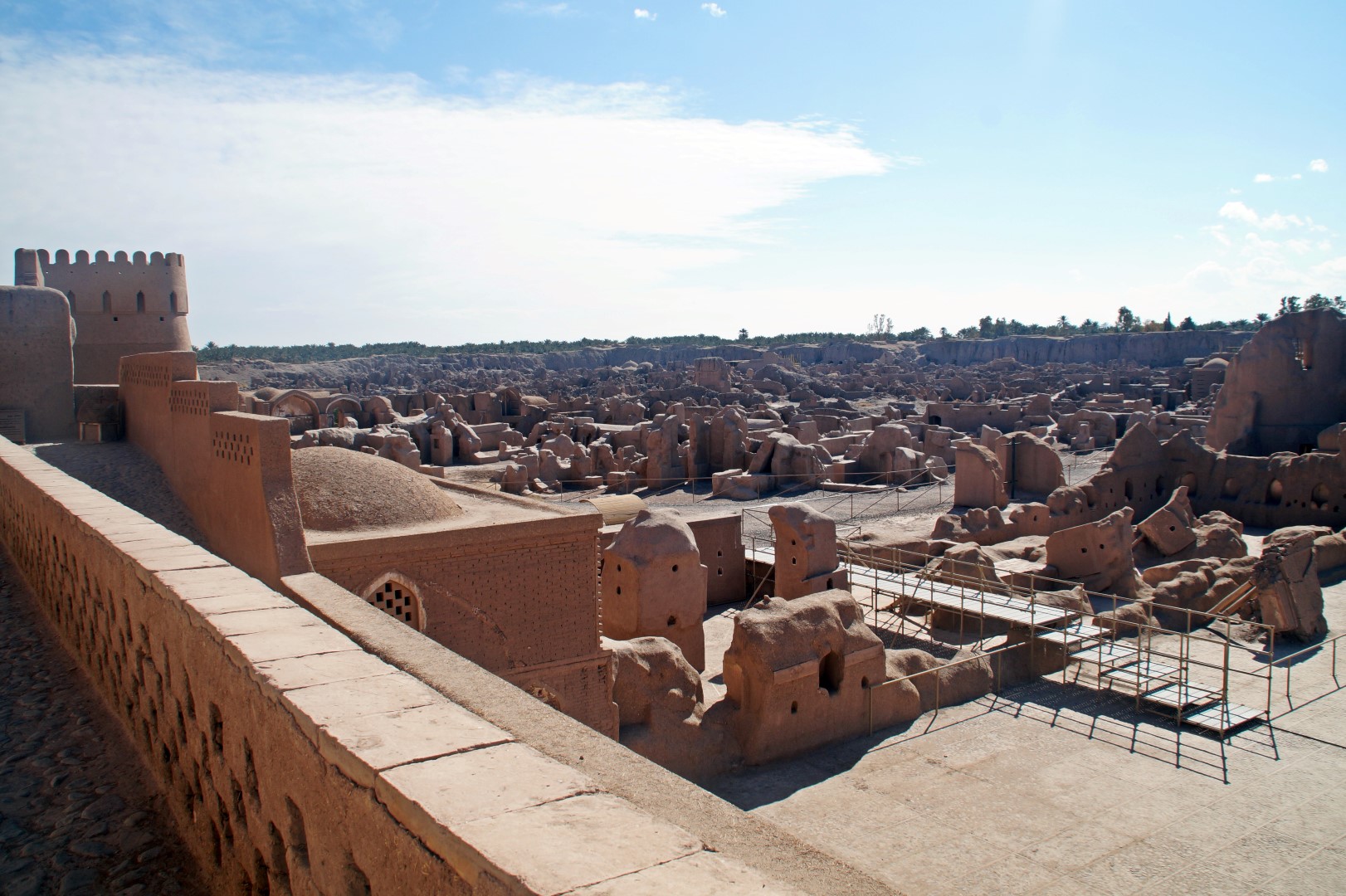
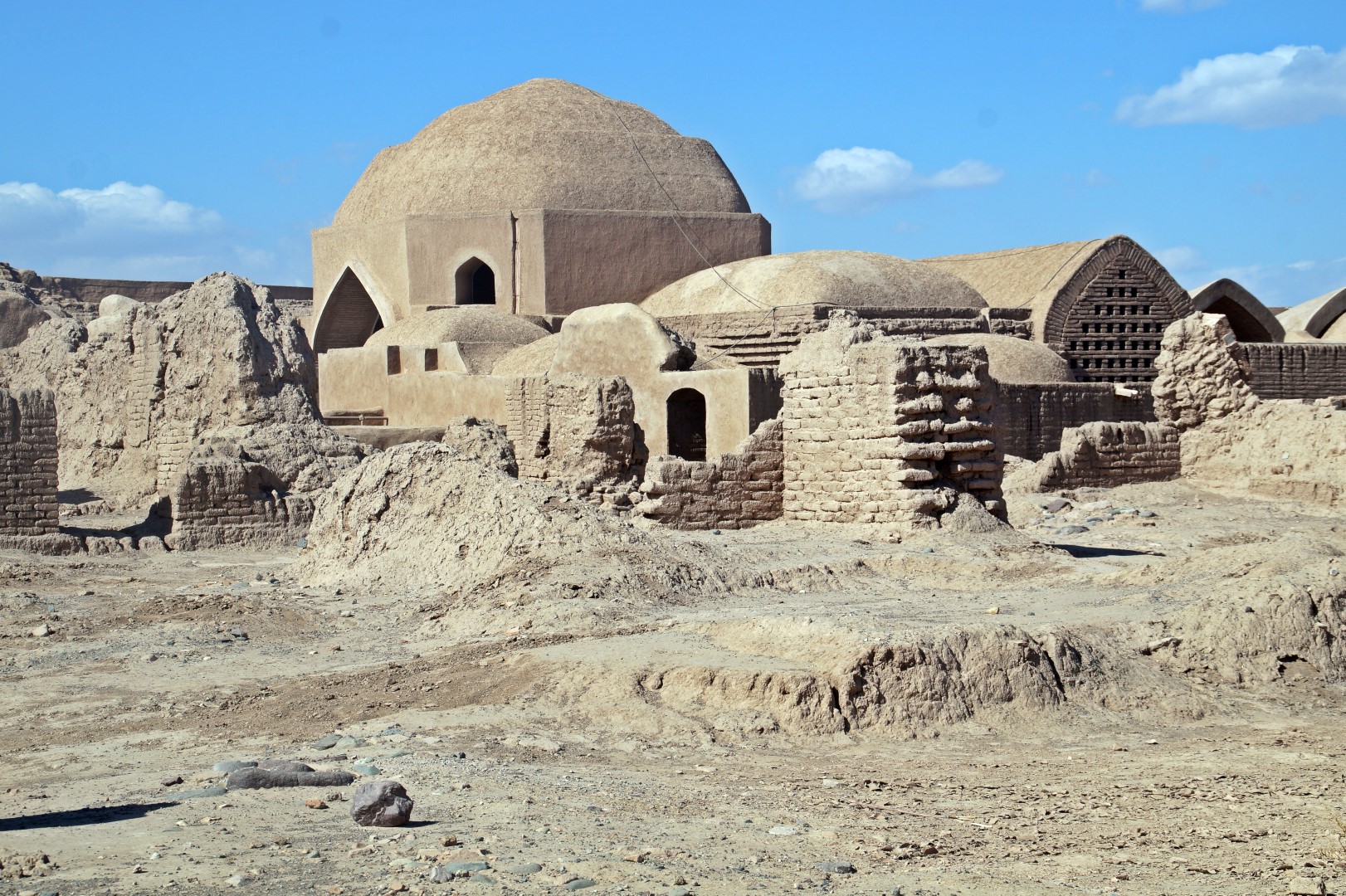
The Coloured Mountains
On the way to our next stop, Arg-e Rayen, we drove through the most beautiful mountain range, and made several stops along the way to photograph the so-called “Coloured Mountains” located in between the villages of Rayen and Golbaf. This area of Iran is simply spectacular and it reminded me a lot of Central Mongolia with the vast steppe and high and colourful mountains.
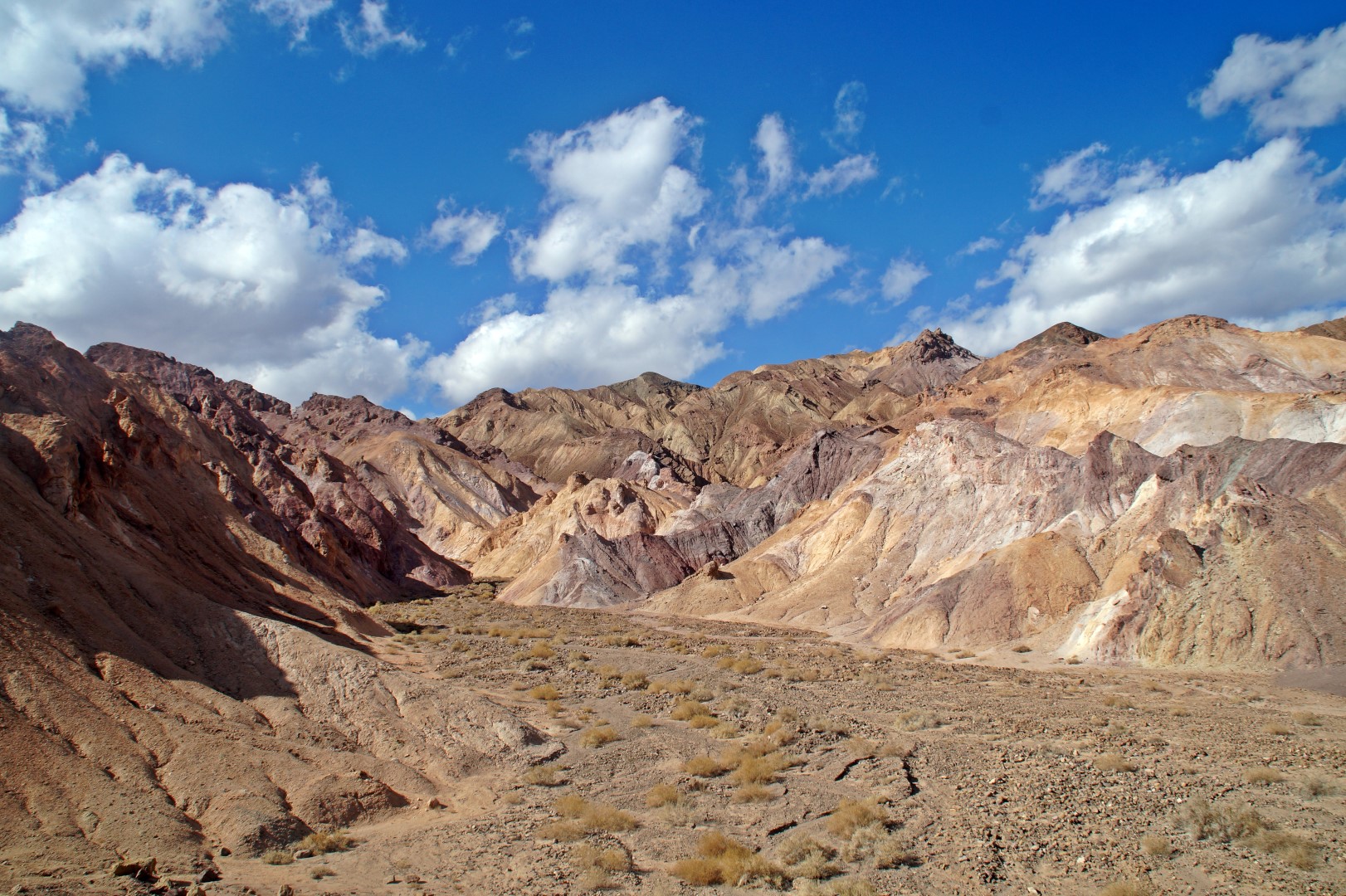
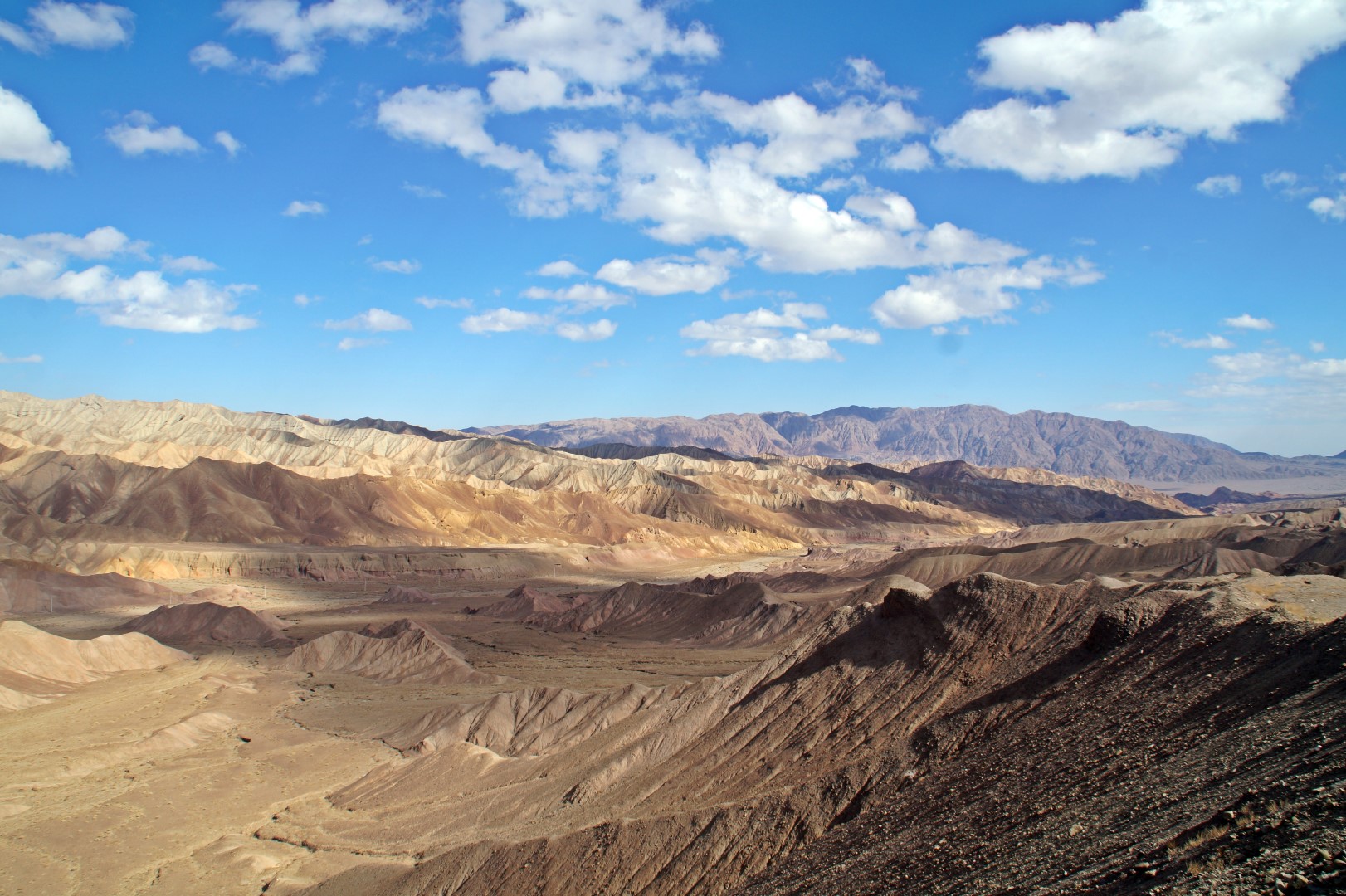
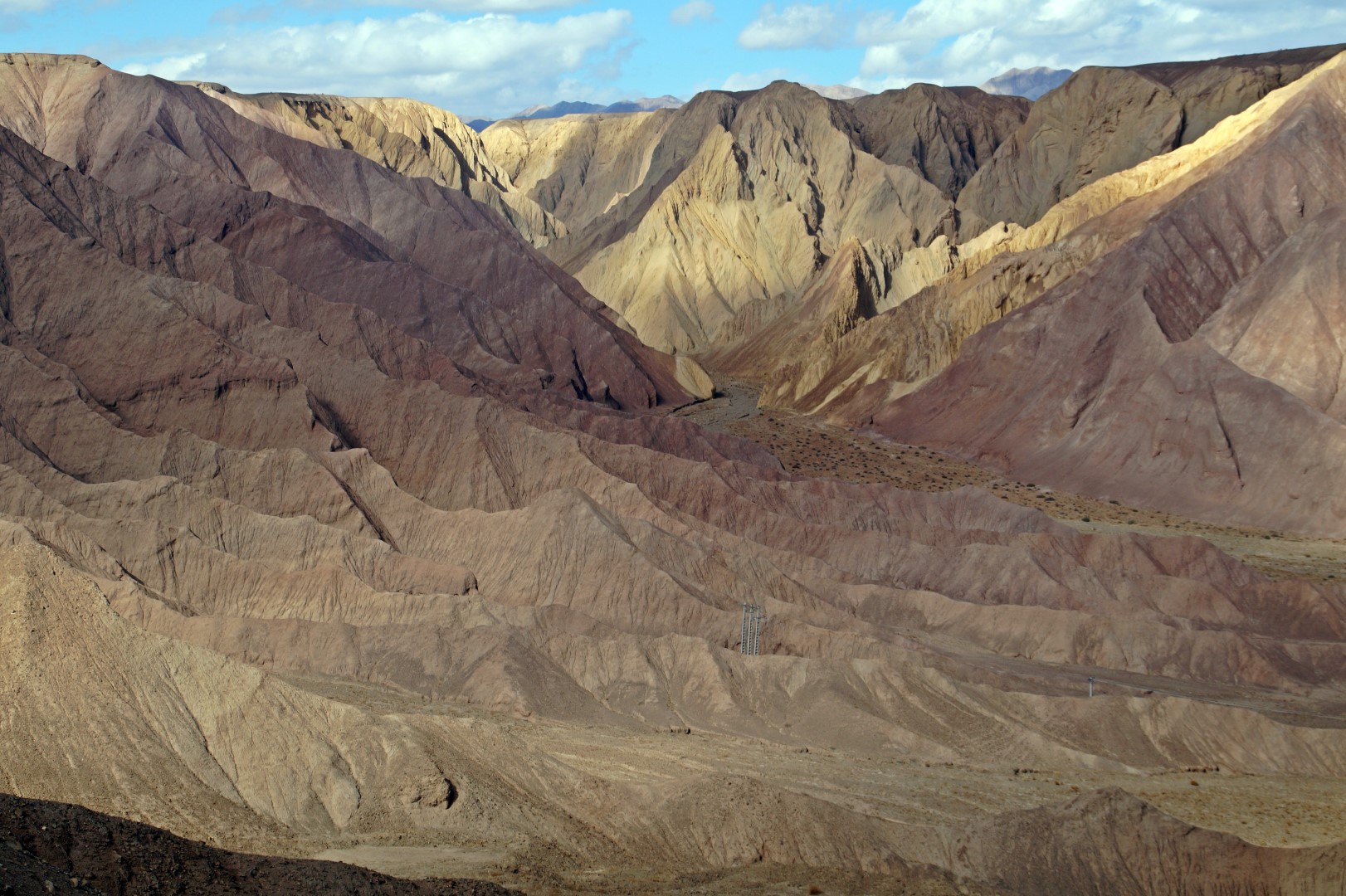
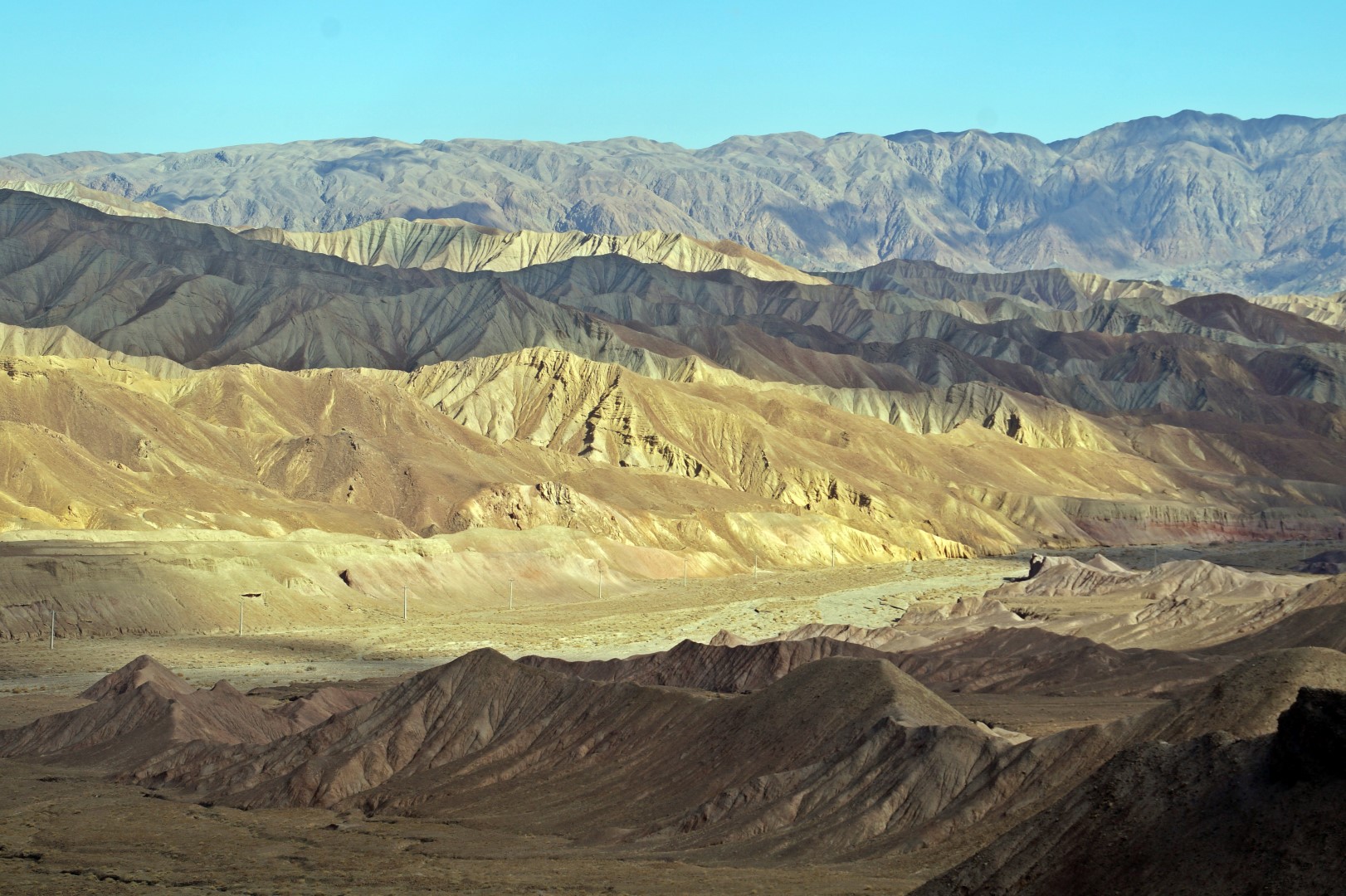
Eating locally in Rayen
When we got to the village of Rayen, we stopped by a local restaurant for lunch. The restaurant reminded me a lot of the restaurant that Steve and I went to in Sultan Eshkashim in Afghanistan back in May, and it served the same kind of well-tasting food as well! I love going to local restaurants, although I can’t eat much of the local food, since I’m vegetarian – the rice and flatbread is always delicious though!
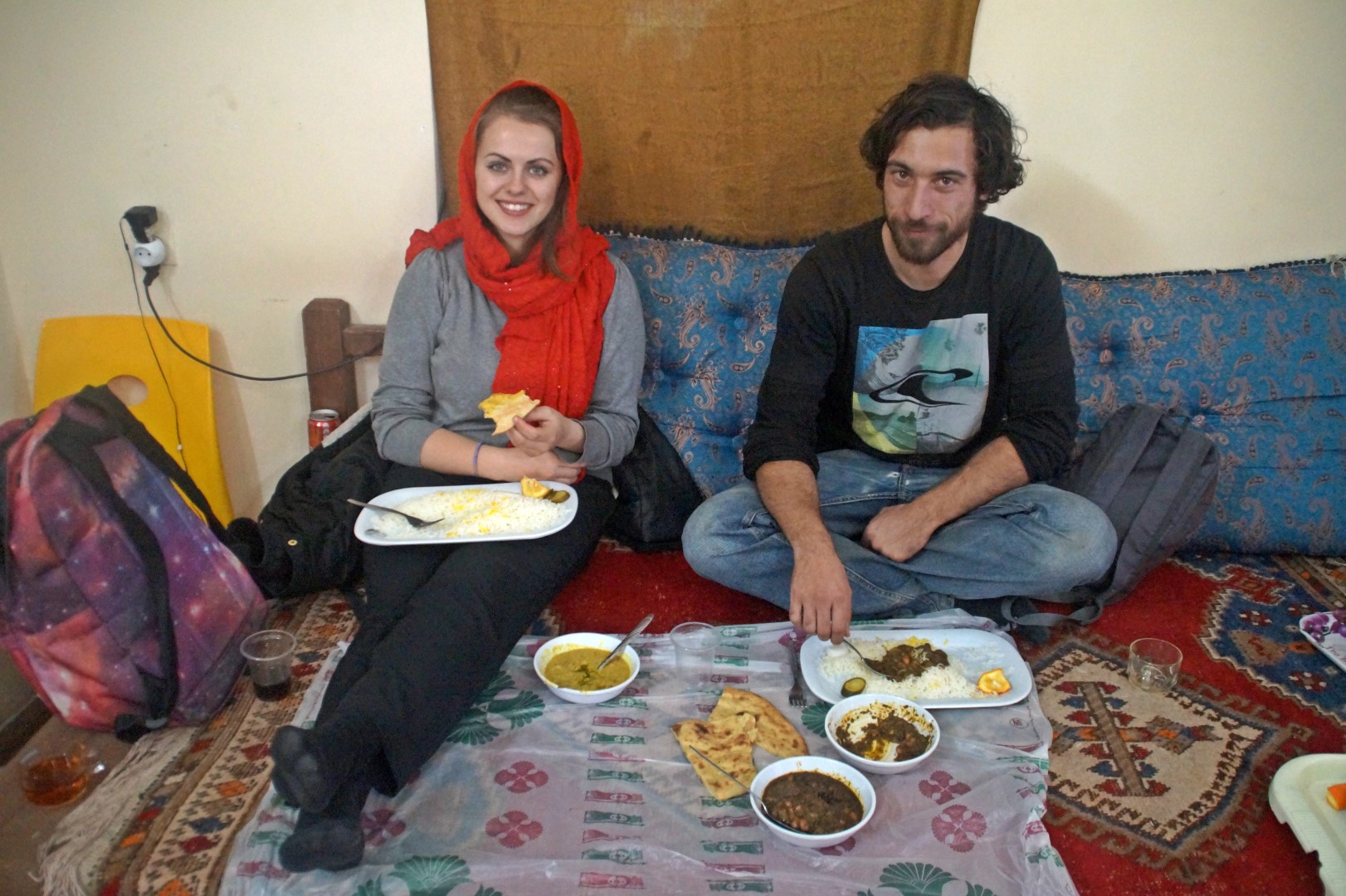
Arg-e Rayen, the ancient castle of Rayen
Arg-e Rayen is an adobe castle, which in comparison to the citadel in Bam, is extremely well preserved. The castle is believed to be at least 1,000 years old, and the surrounding mudbrick buildings were inhabited until 150 years ago.
While quite similar to the reconstructed citadel in Bam, Arg-e Rayen was much more interesting to explore. Unlike Bam, everything at Arg-e Rayen was accessible, apart from a few staircases that were blocked off. Steve and I spent a good hour exploring all the ruins, climbing as many staircases as we could until we got to an almost inaccessible one that caught our curiosity, and despite looking slightly ready to collaps, we climbed it and came to the top of the castle towers – it was awesome!
It was easy to imagine the life that went on at Arg-e Rayen. Like in Kharanaq, the accessibility of Arg-e Rayen is probably due to being located in Iran, because never before have I been to an archaeological site and been able to explore it freely – and especially not one that is half collapsed! In Europe especially, all of the most interesting rooms and staircases in the castles and fortresses are always blocked off, but in Arg-e Rayen that was not the case at all – I could simply wander wherever I wanted, touch whatever I wanted and photograph whatever I wanted. I wonder how many years it will take for UNESCO to discover Arg-e Rayen as well and have it made inaccessible for the curious tourists – hopefully it won’t happen, and if it does, hopefully it’s not because of another earthquake.
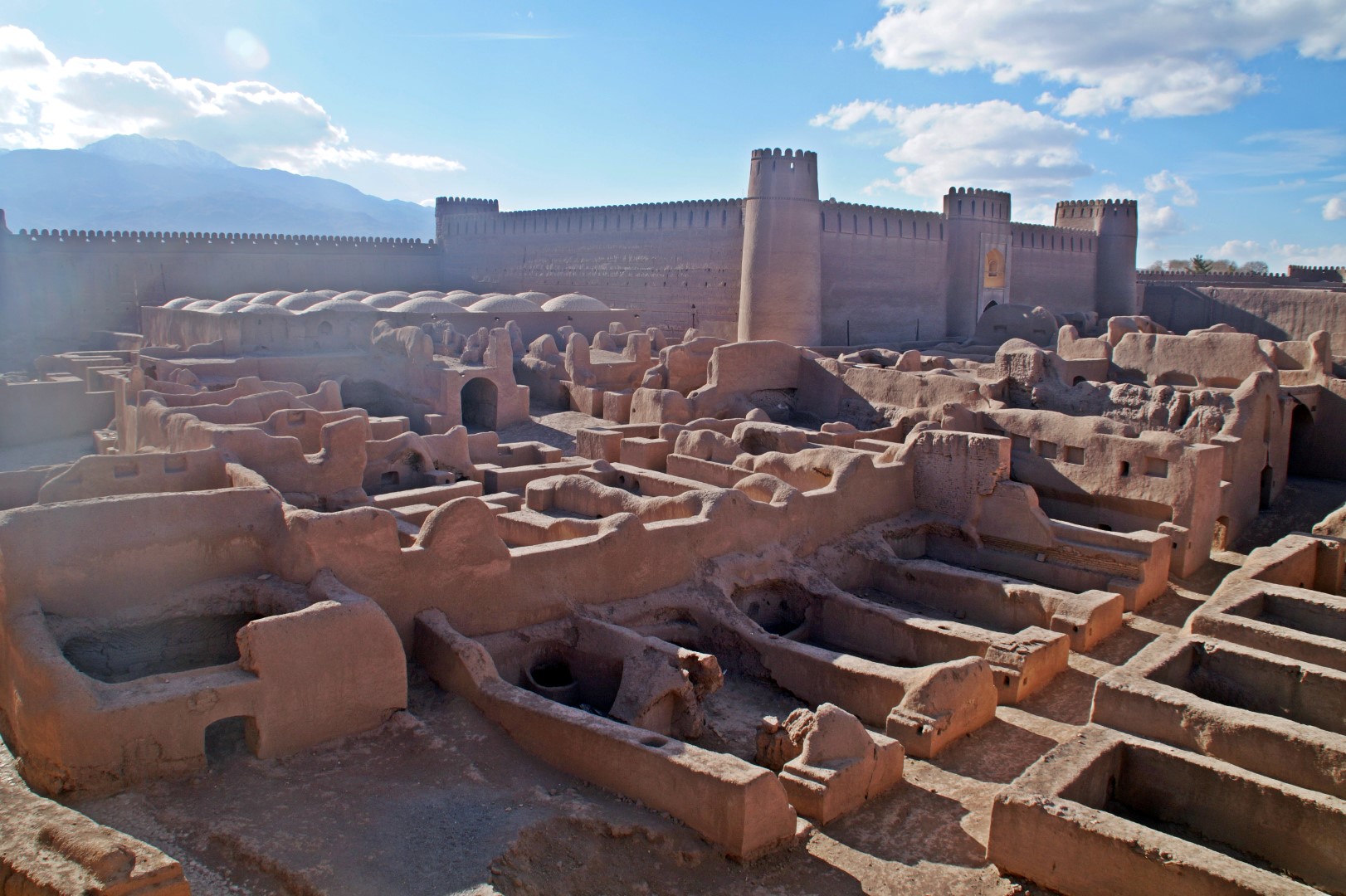
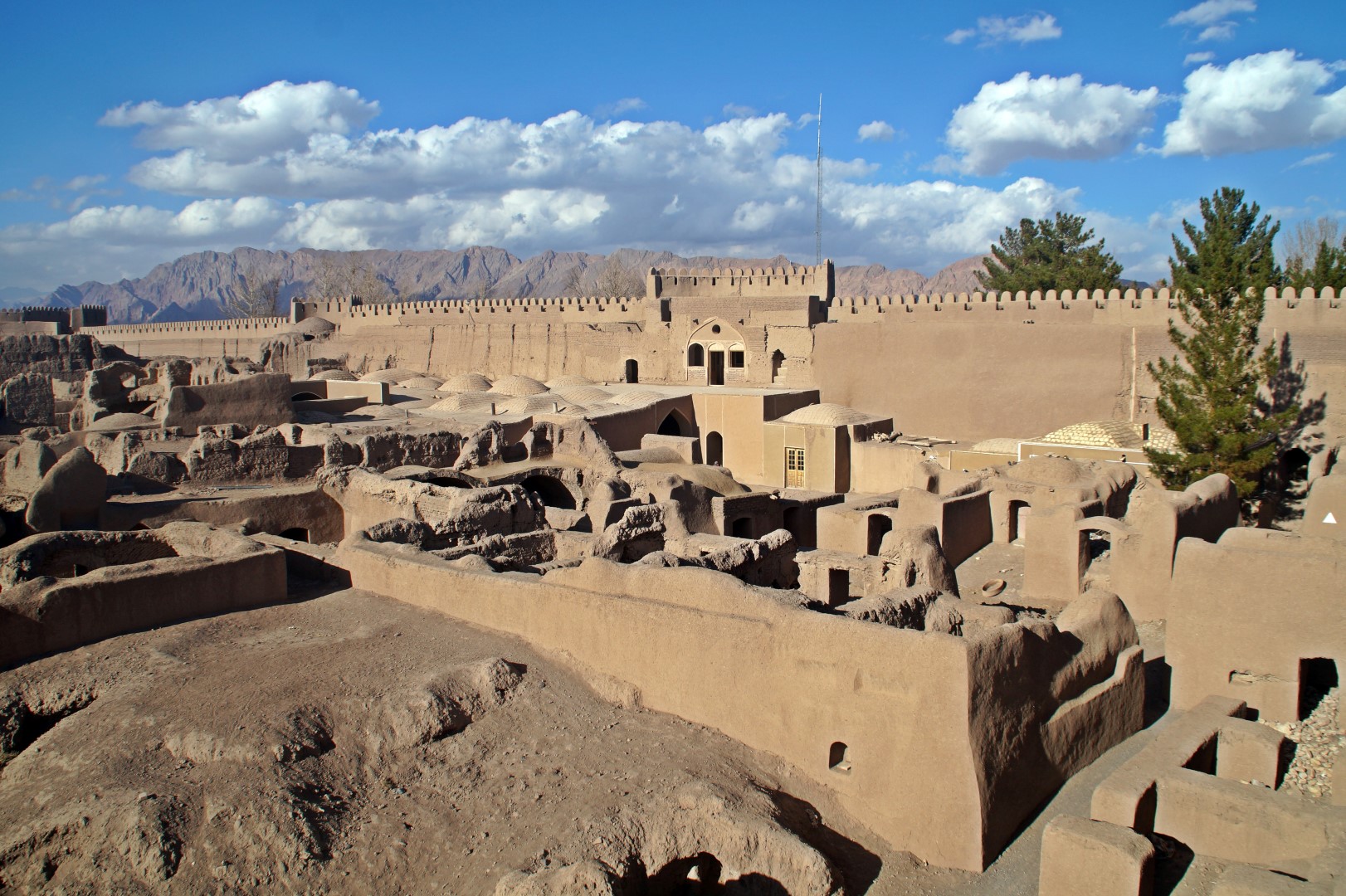
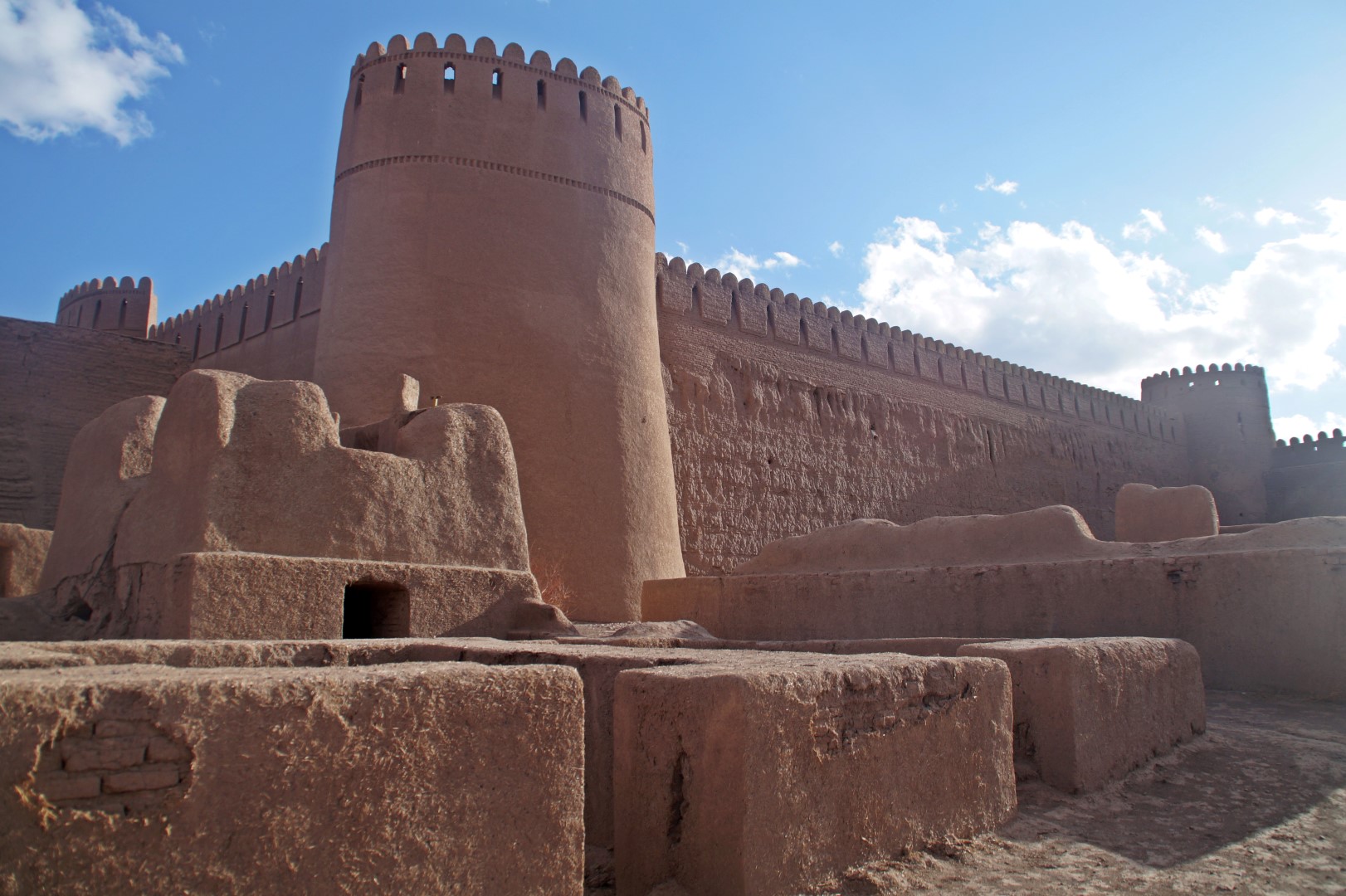
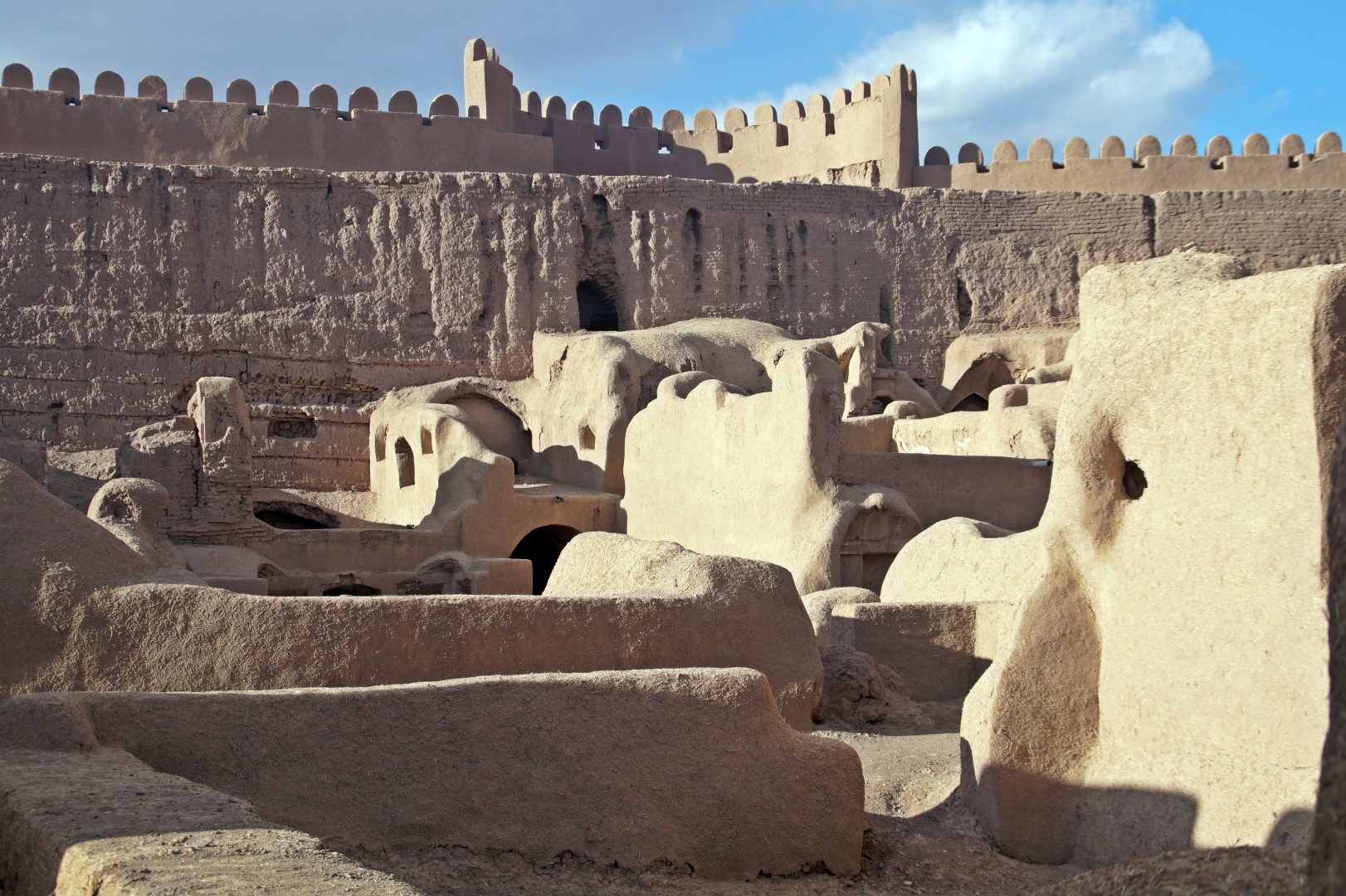
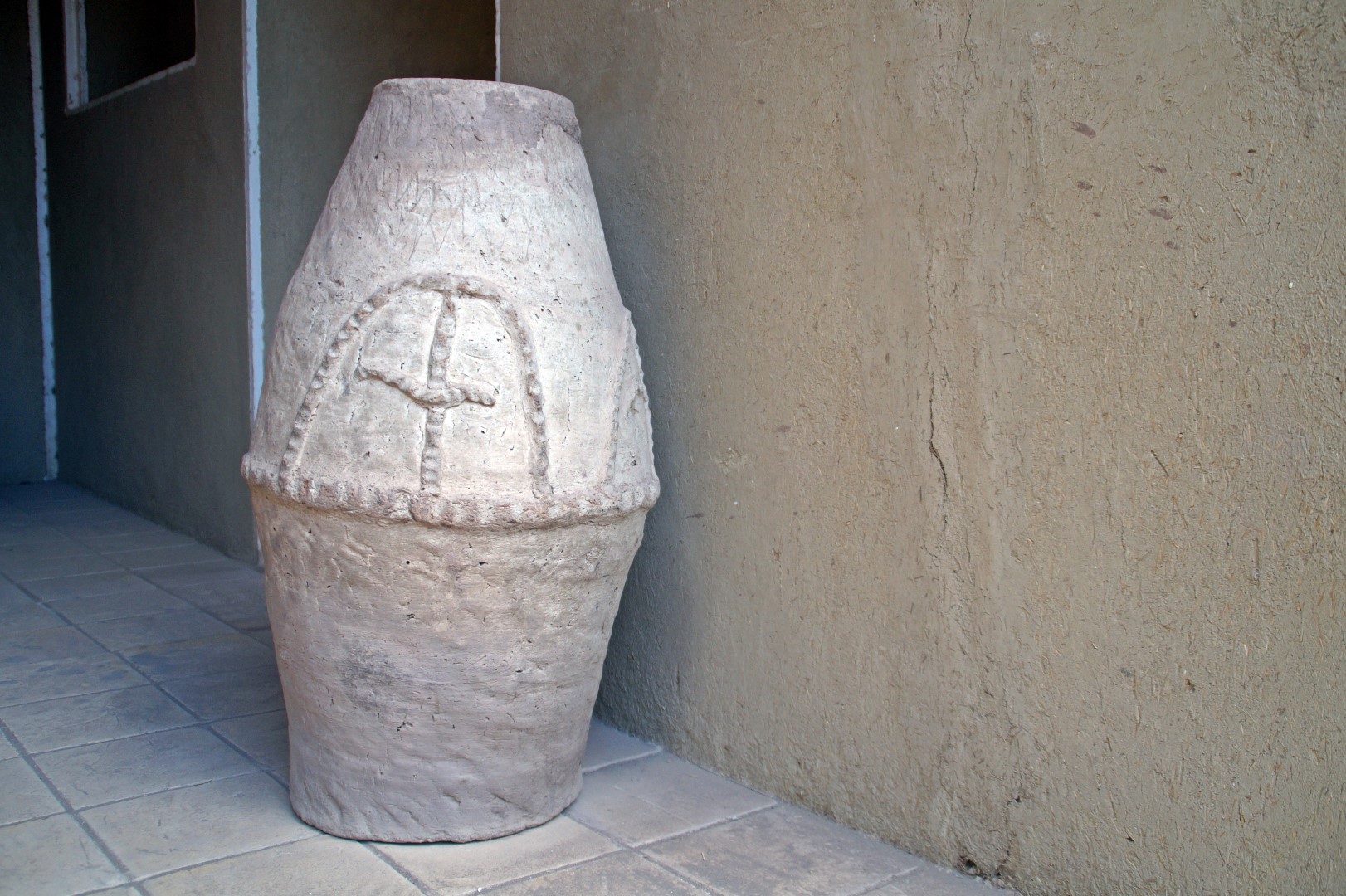
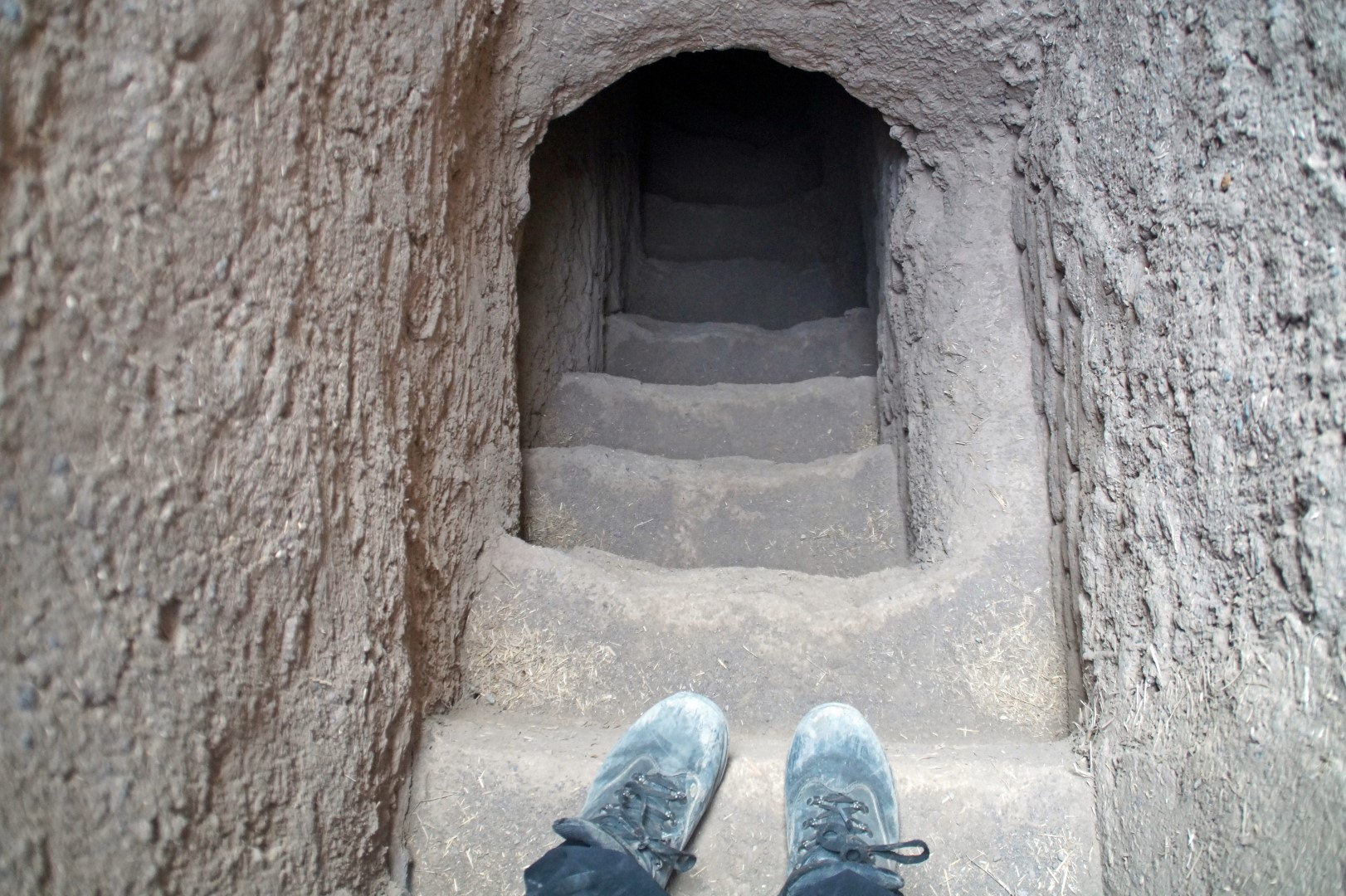
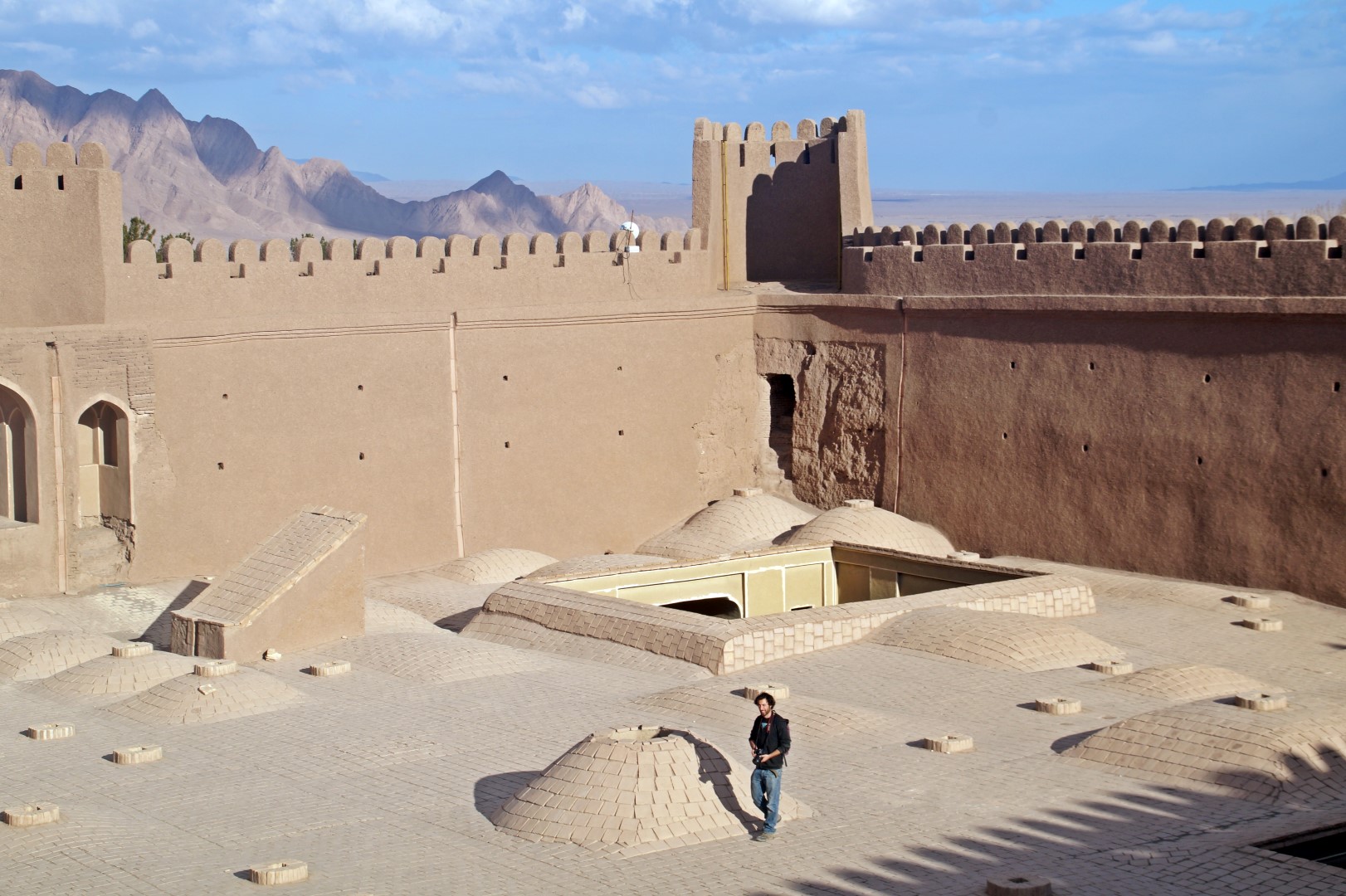
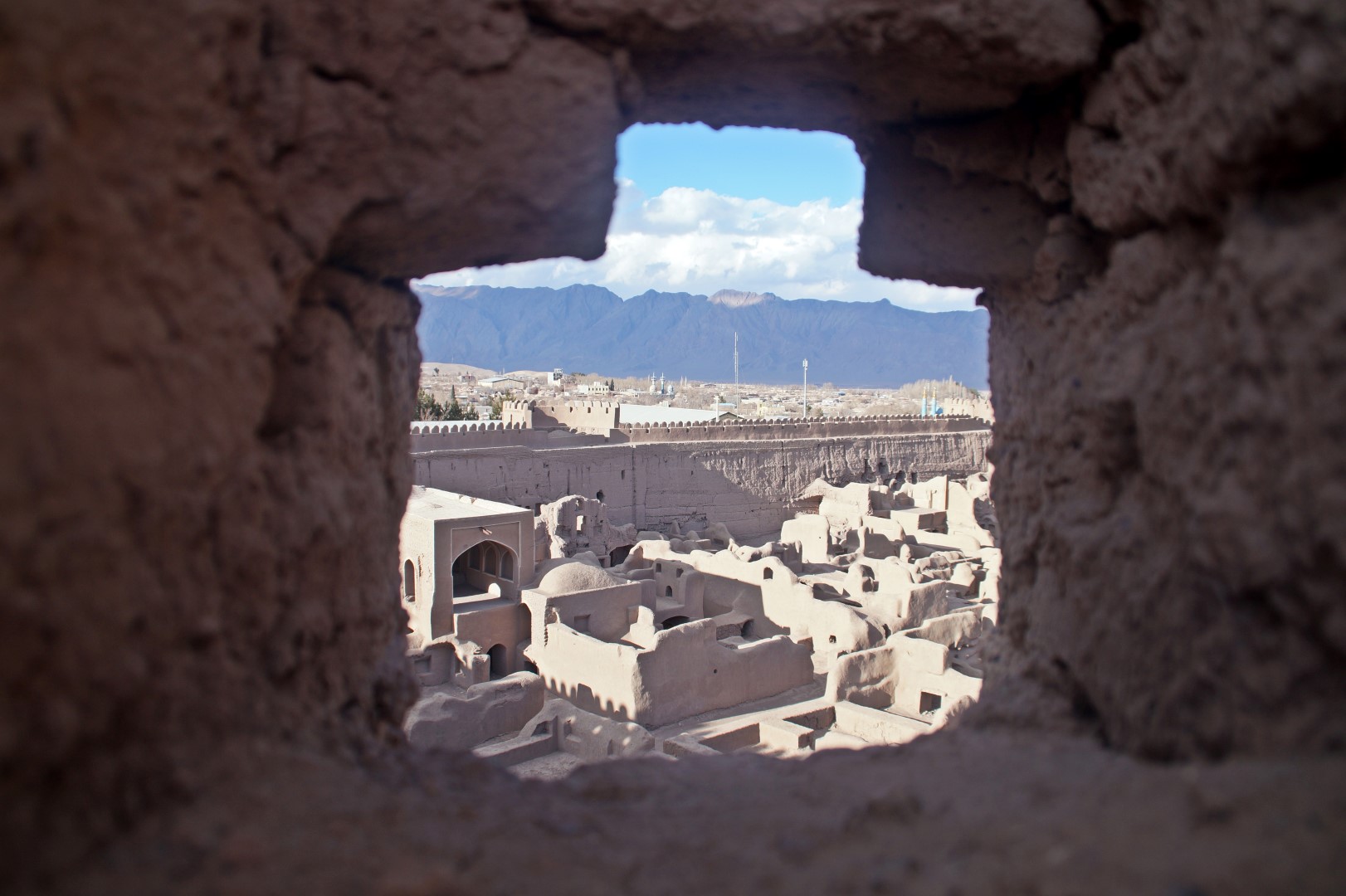
Shazdeh Garden, a Persian garden in Mahan
The last stop on the tour was the Persian garden of Shazdeh in the village of Mahan, part of the “The Persian Garden” UNESCO World Heritage Site. Shazdeh Garden was built in 1850 and was entirely remodeled and extended in the 1870s. The garden was a huge positive surprise! After being slightly disappointed by the Fin Garden in Kashan, we were expecting the same kind of ordeal in Mahan, but the garden in Mahan was in fact much much nicer!
Unfortunately, the entrance fee was 400,000 rial (12½ USD), which was way over our budgets, so we chose to just see the garden from the entrance, which our driver also recommended us to do. It was enough to get a look of the beautiful garden and for me to make up my mind about how my future garden will look, if I ever become a millionaire 😉
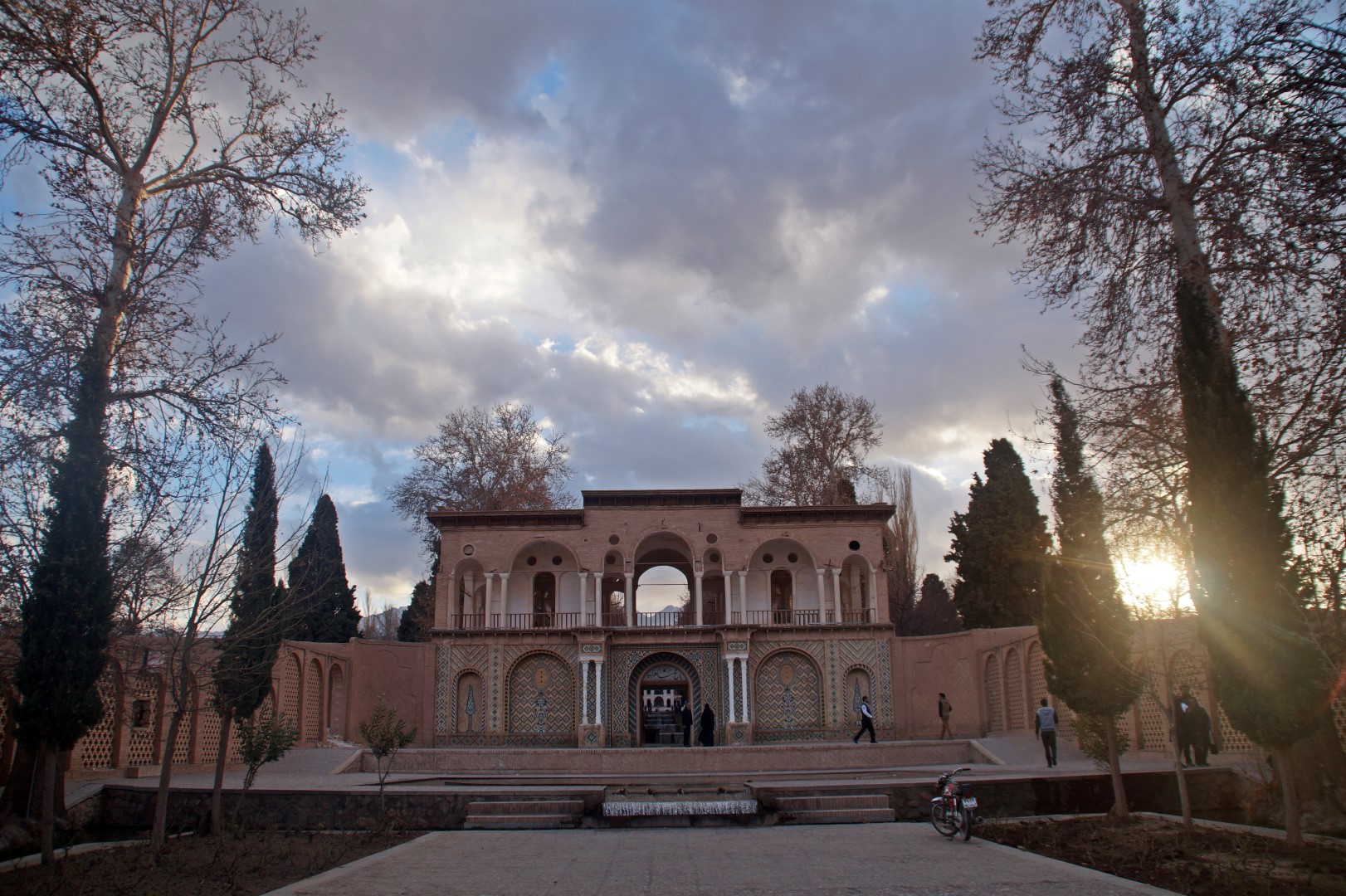
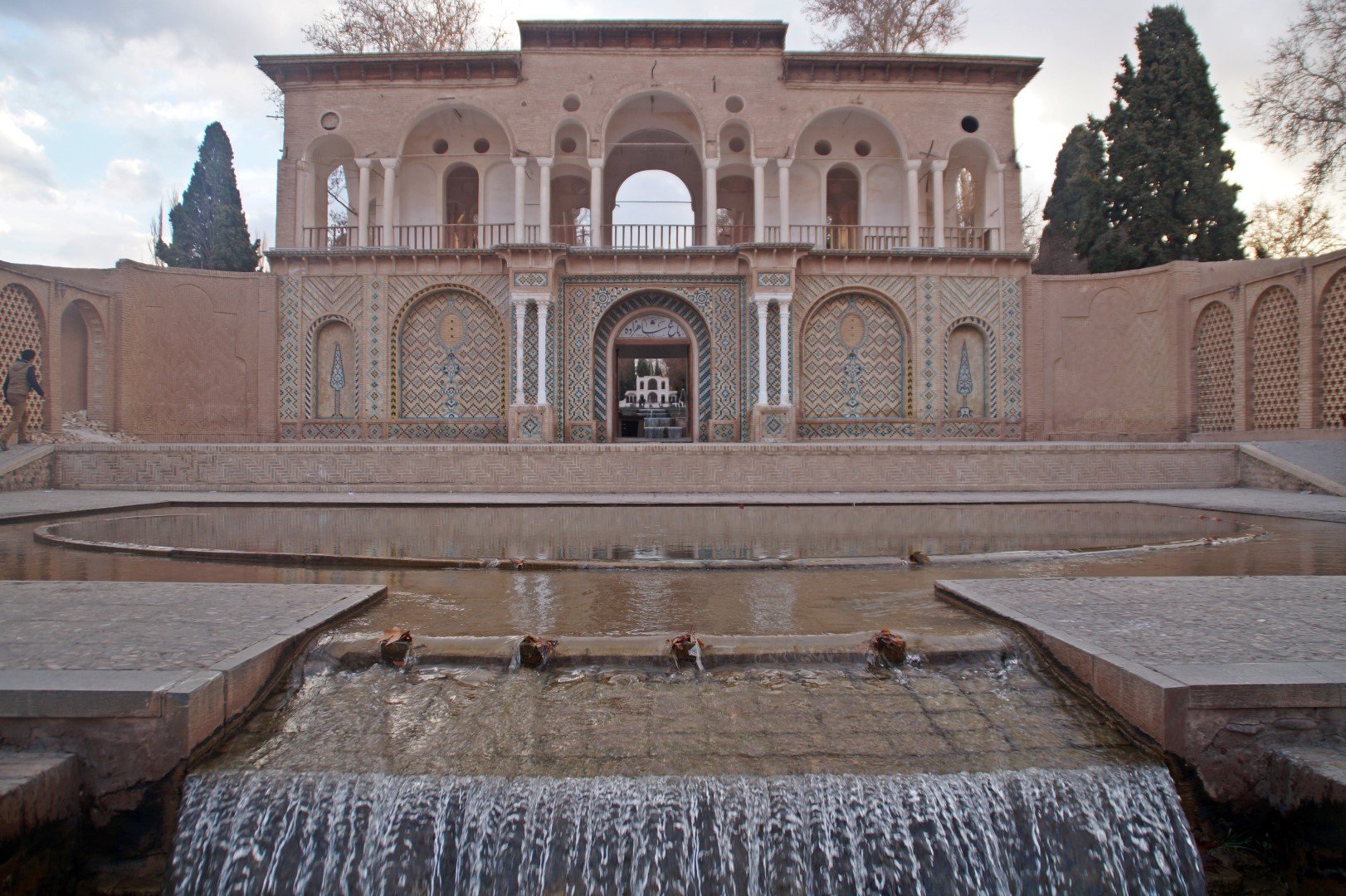
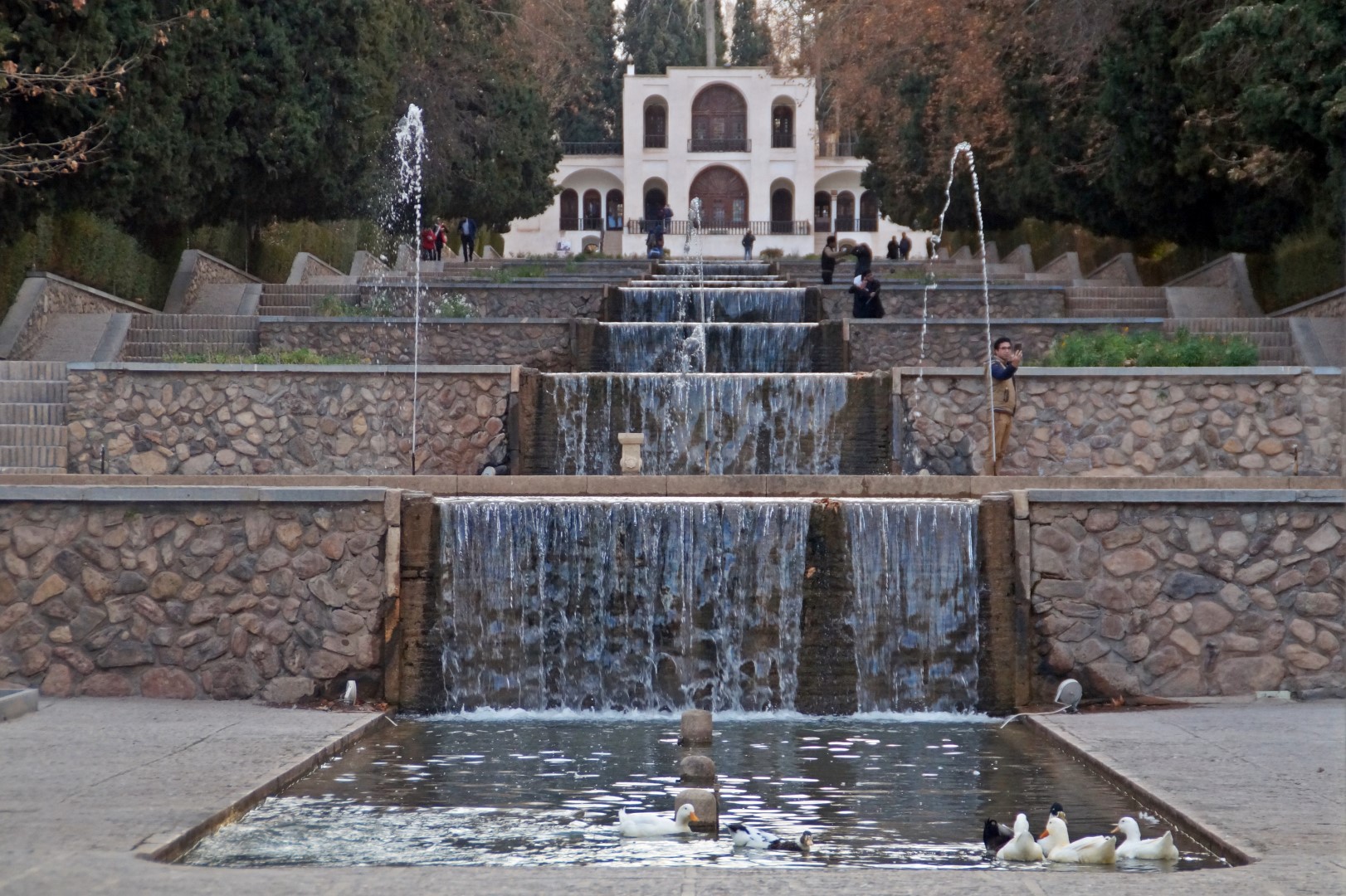
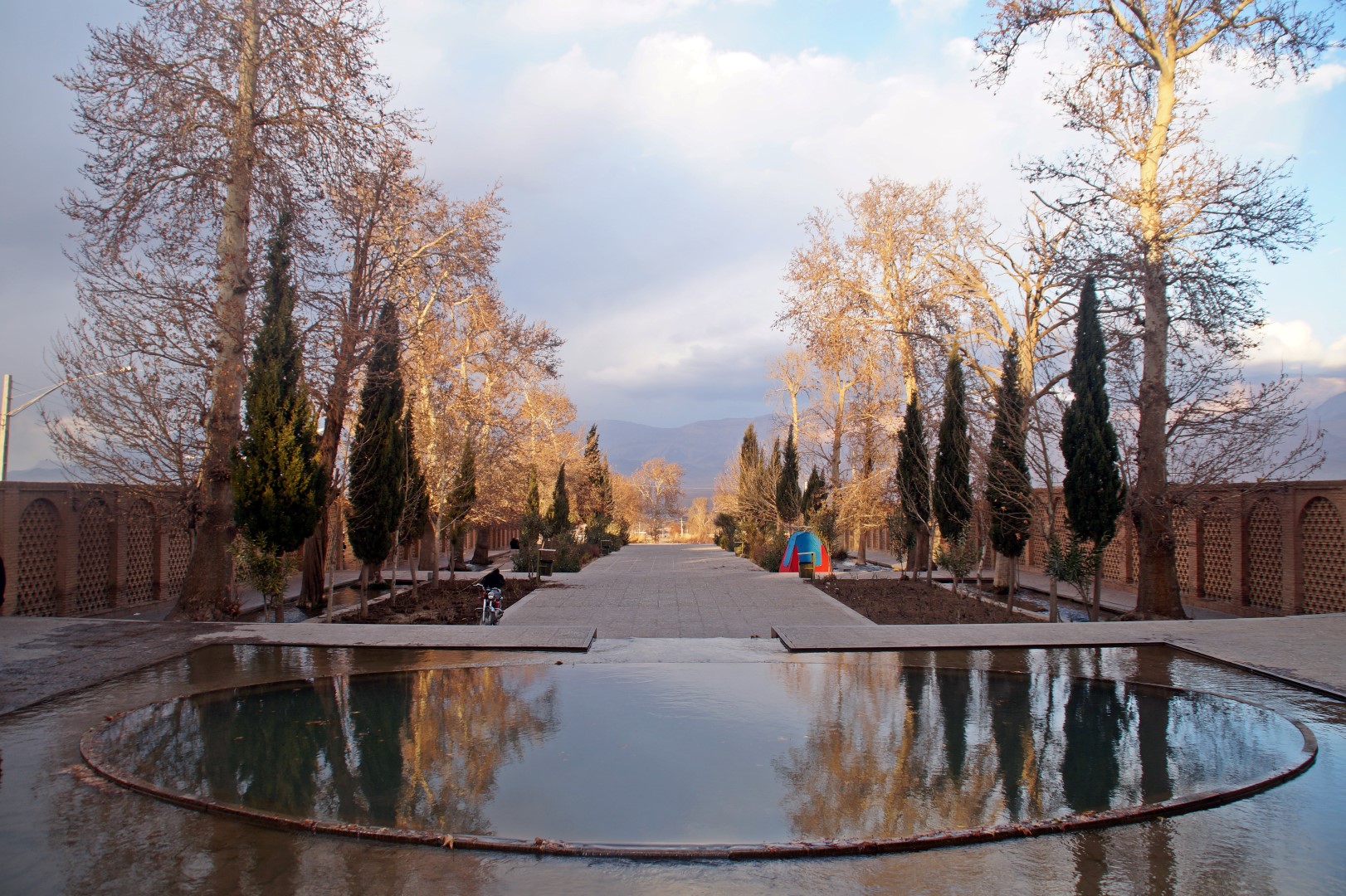
Mahan Mosque and Garden
Because the entrance fee to Shazdeh Garden was so expensive, our driver decided to show us another garden in Mahan, this one connected to Mahan Mosque, which was free to go in. This garden wasn’t quite as beautiful, but it still had some character and it was interesting to experience a village mosque after seeing all of the major famous mosques in cities like Tehran and Esfahan.
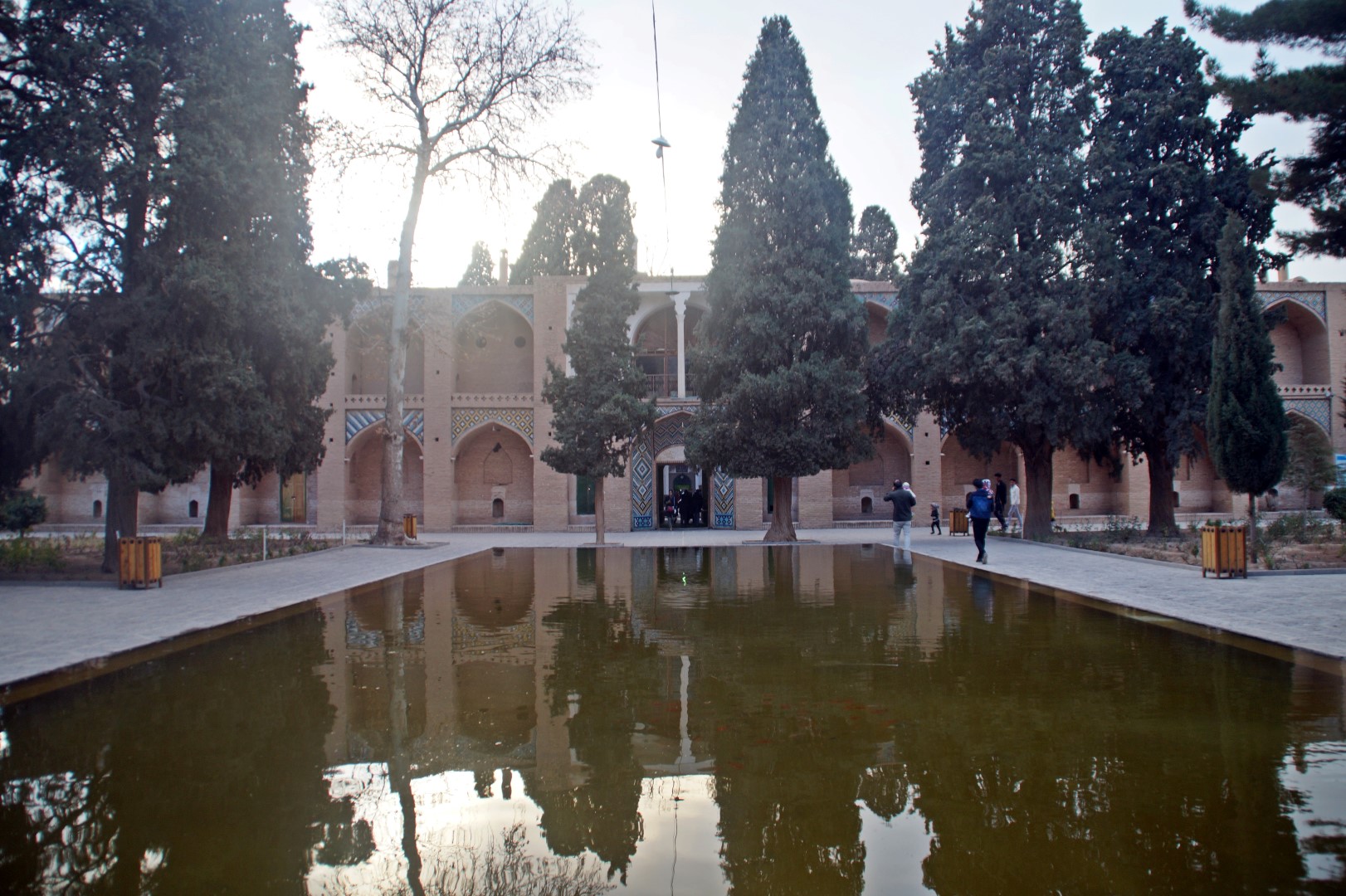
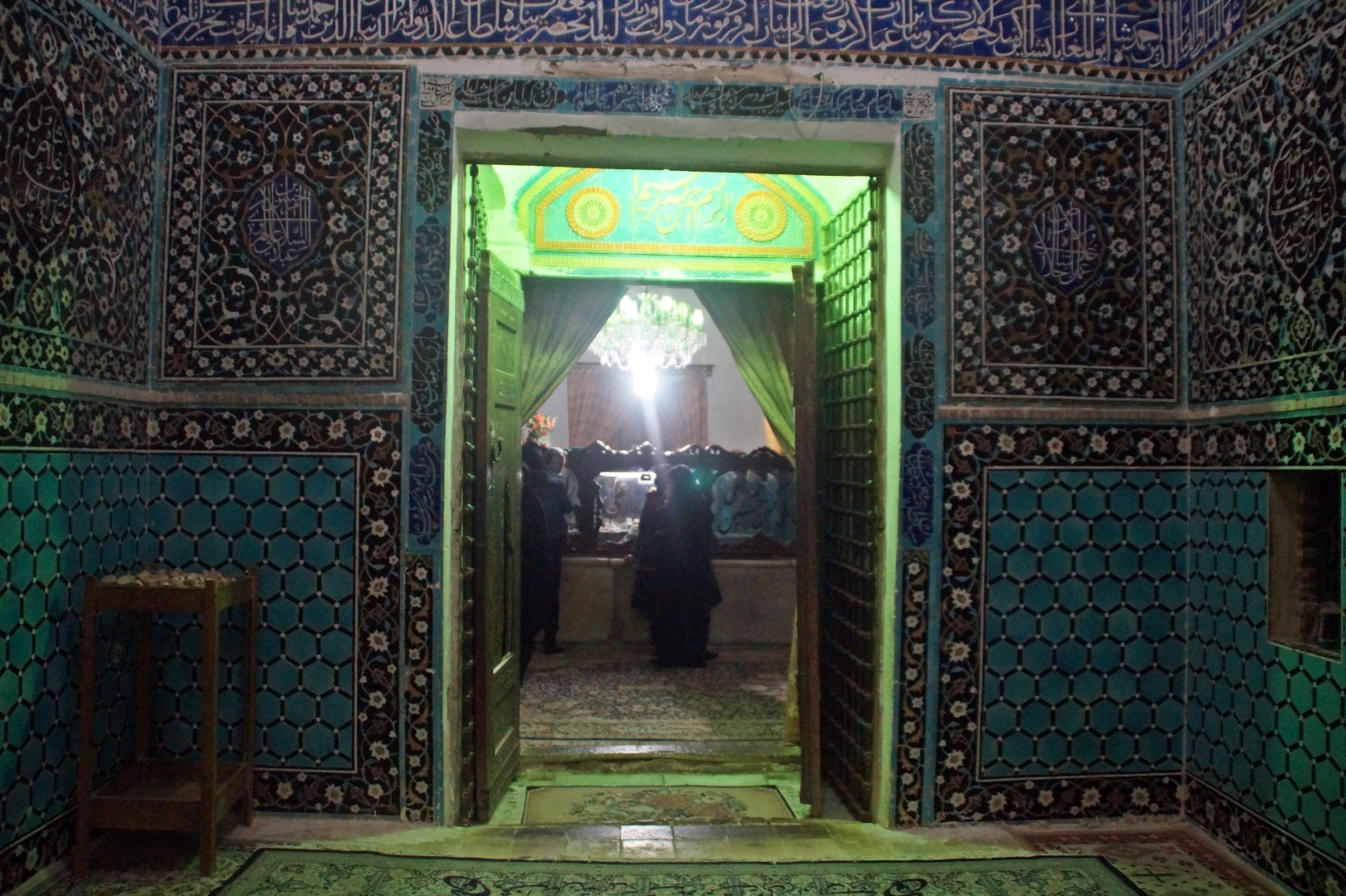
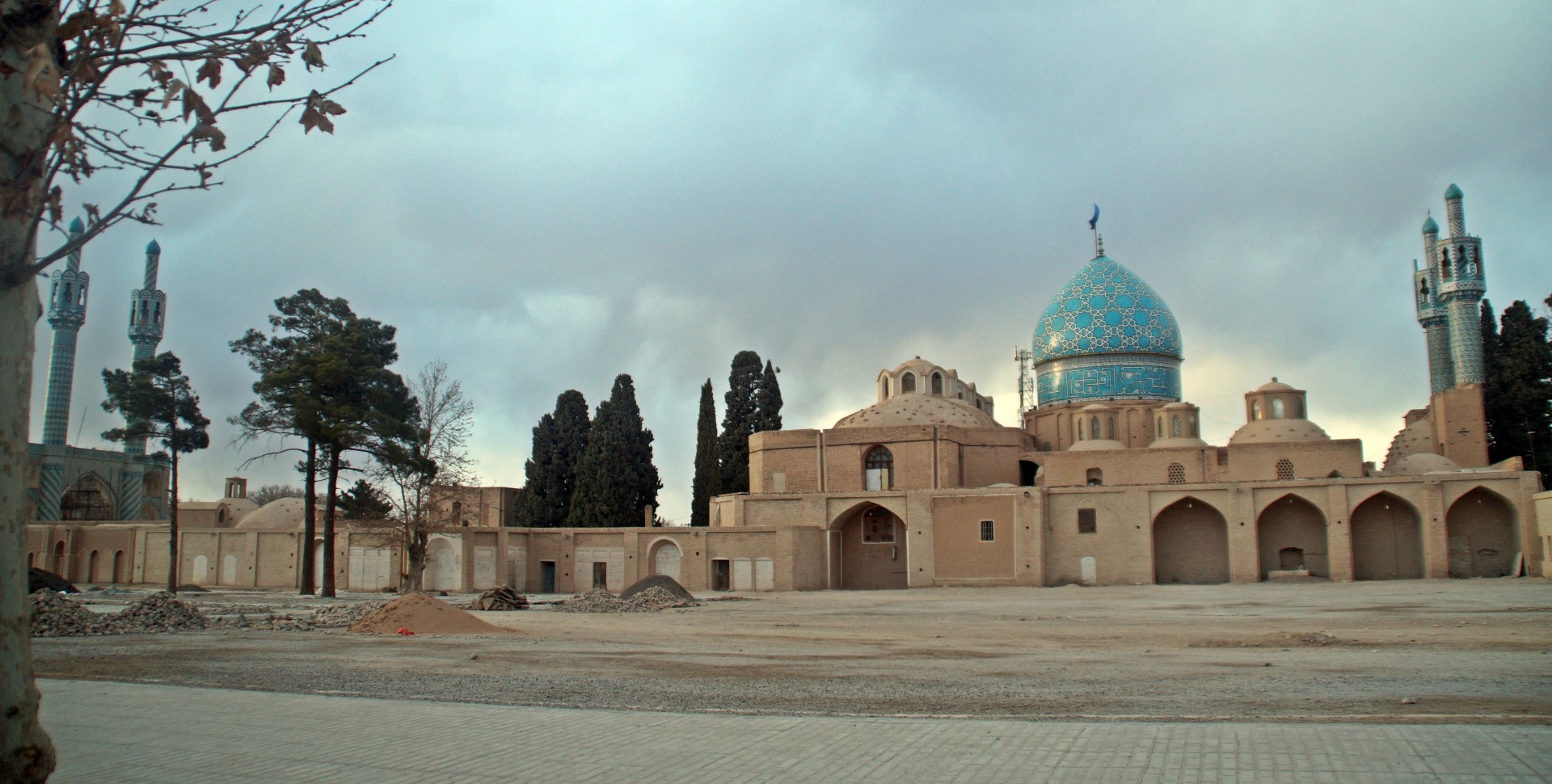
At the end of the trip, I was sad to say goodbye to our awesome driver, who had taken us to some amazing places two days in a row. We didn’t see any of Kerman, despite staying in the city for three nights, but the surrounding sights – both natural and cultural – were very worth coming to the area for!
How to get to Bam, Rayen and Mahan
- From our research, we know that it’s possible to get public transport to Bam, but I’m unsure about Rayen and Mahan. The owners of Akhaven Hotel or English-speaking locals would know.
- We chose to do a tour to the three destinations, which cost us 40 USD for two people. We booked it at Akhaven Hotel and they set us up with a driver for the day. The tour took 9½ hours.
- Entrance fees: Bam is 200,000 rial (6 USD), Rayen Castle is 150,000 rial (4½ USD) and Mahan Garden is 400,000 rial (12½ USD), but you can see most of it from the entrance, so avoid paying for this overpriced sight (despite its beauty).
Leave a Comment
Pingback: Romantic Córdoba: Alone in Spain’s city of love – Northtrotter on 14/02/2017


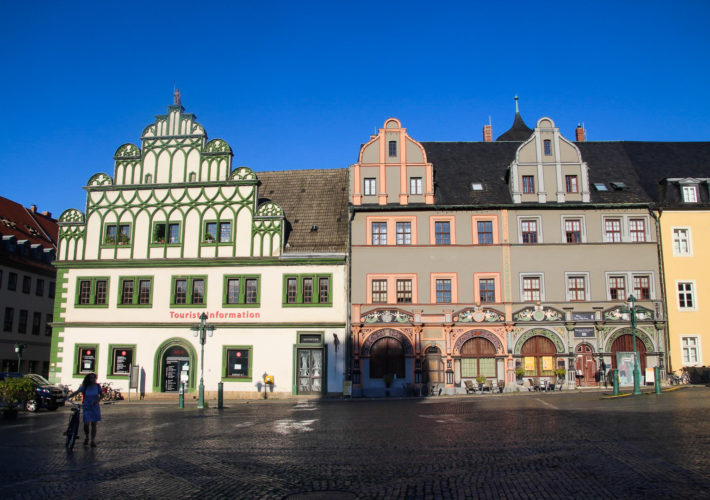


7 COMMENTS
morteza
7 years agohi
i live in Rayen. i read your post about my beautiful city. I think you have described it in a nice way. I want to ask you to tell other Europeans about the beauties of the great Iran, especially Rayen. i am very happy that you have had a pleasant experience in Rayen. Hope to see you again in Rayen. If you eolud like to be in touch, this is my gmail:rayen10653@gmail.
best regards
Morteza
Melissa Cherry
7 years agoHello Morteza, thank you so much for your kind comment! I loved Iran, and Rayen was very beautiful. I’ll definitely be spreading the word about how lovely Iran is! 😀
Hadis
8 years agoThis is a lovely blog …
I was born in Bam, a small city full of history. I, however, do not live there anymore.
Thank you, Dear Mellisa, for sharing this amazing experience.
🙂 Hadis
Melissa Cherry
8 years agoThank you so much Hadis!
You’re very lucky to come from such a beautiful city! May I ask where you live now? 🙂
I’m glad you enjoyed my post about your city! 😀 xx
Ann
8 years agoSo beautiful there! Dear Mel, I guess everyone has a chance to become a millionaire and have such a garden, as I usually say there are not little dreams, DREAM BIG AND MAKE THEM TRUE! This place is a part of history, being there makes us feel closer to the roots of this world!
Melissa Cherry
8 years agoHehe, hopefully one day :p Although I don’t dream of becoming a millionaire, but I would love a garden like that! How about you? 😀